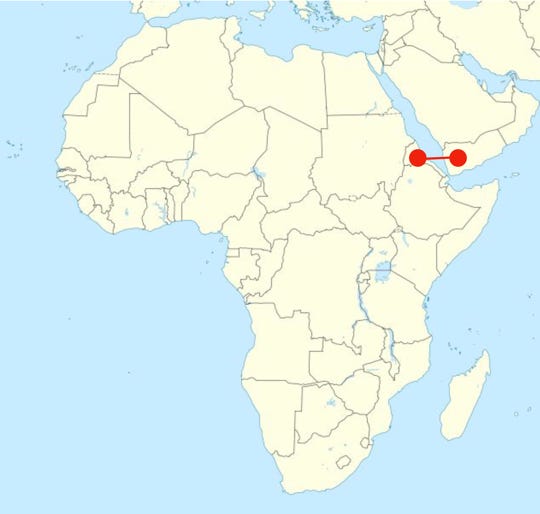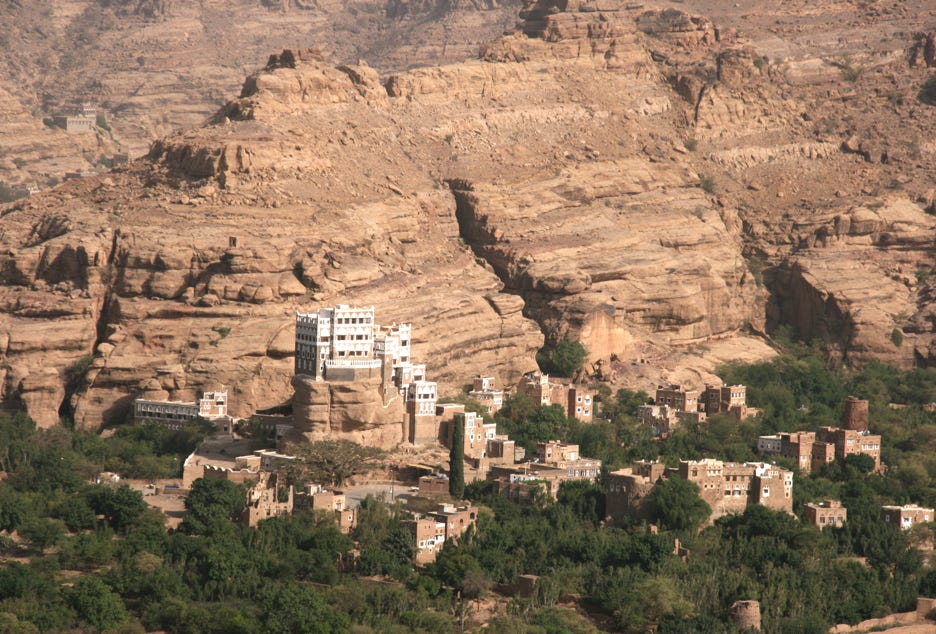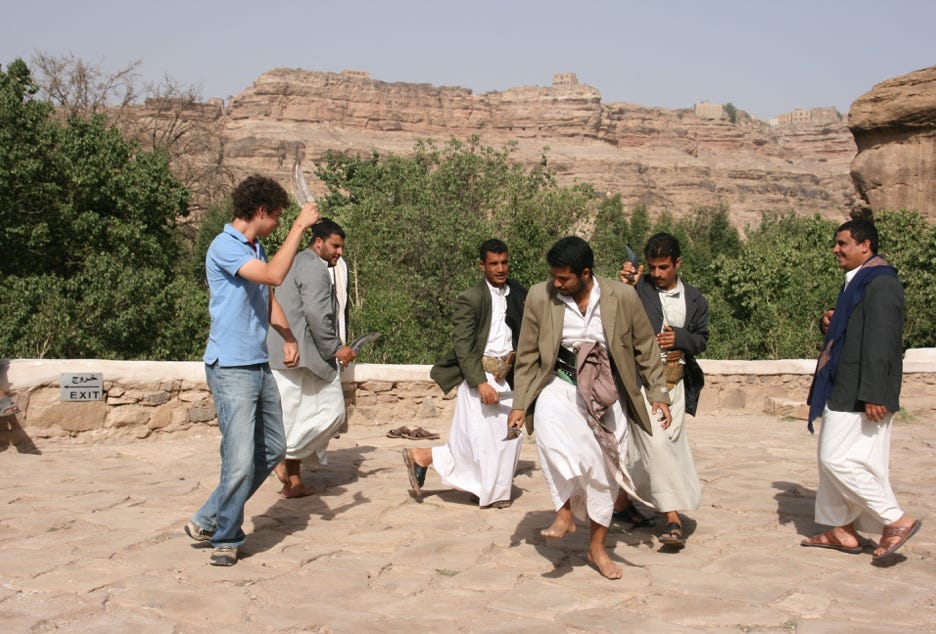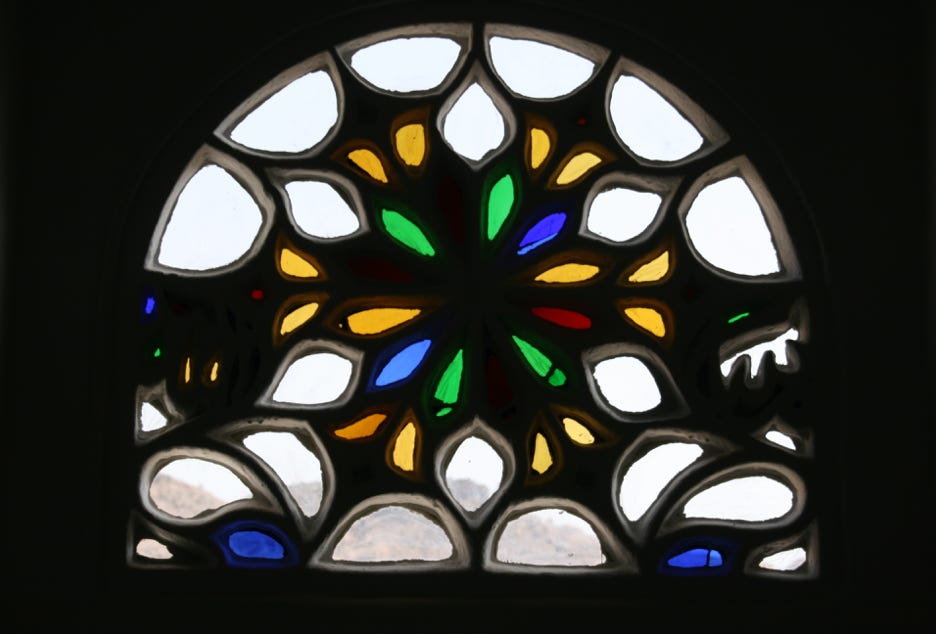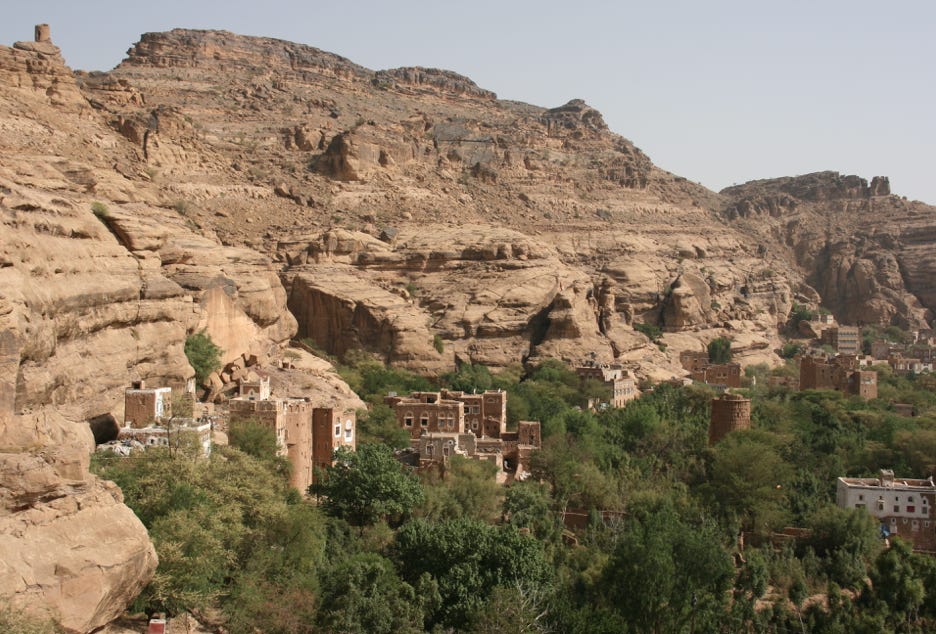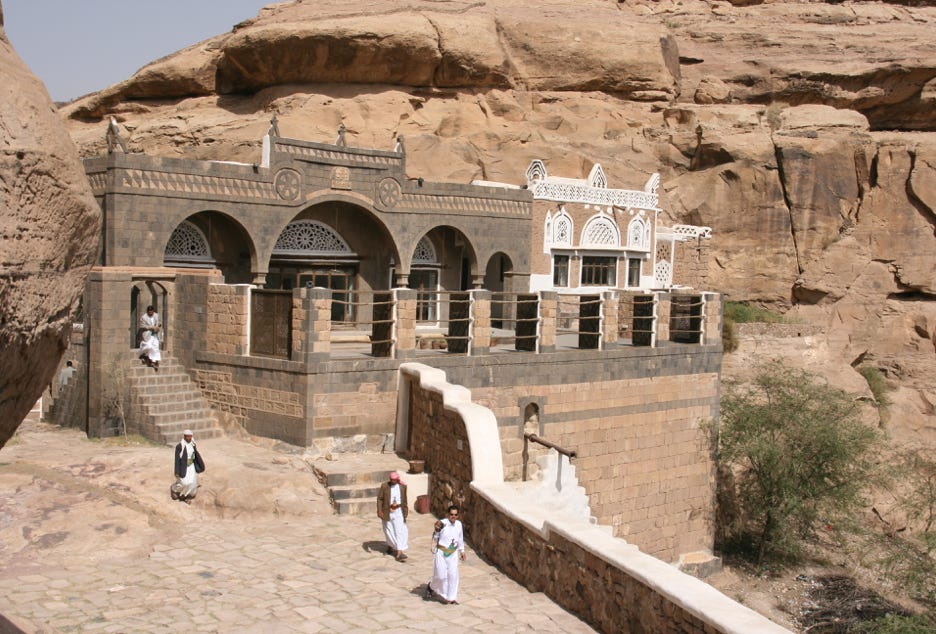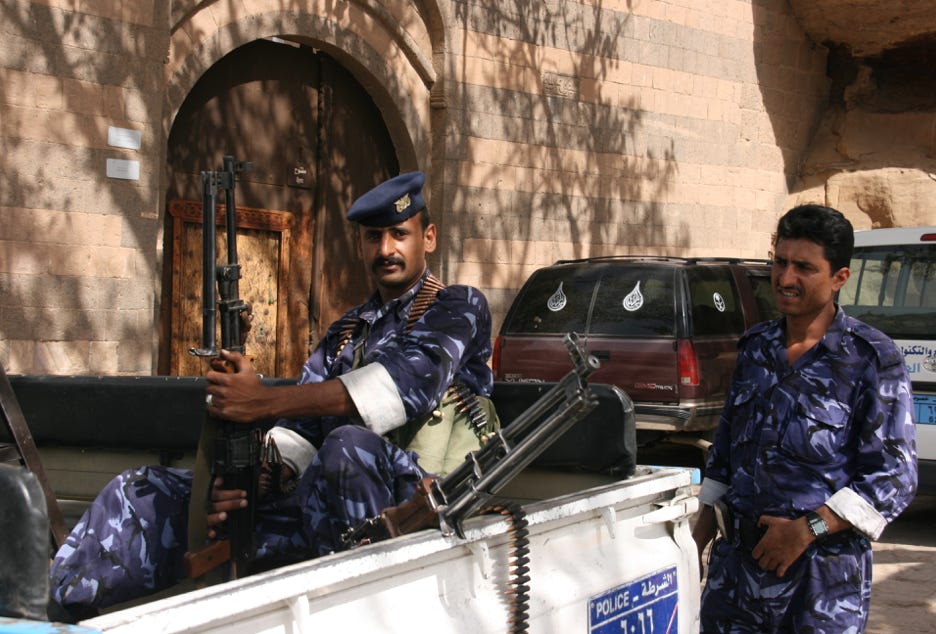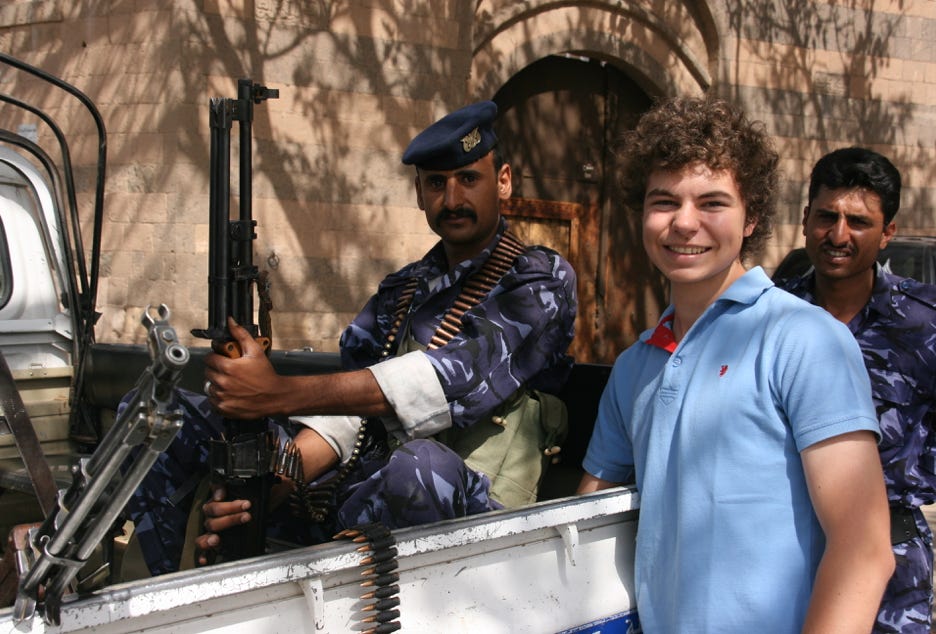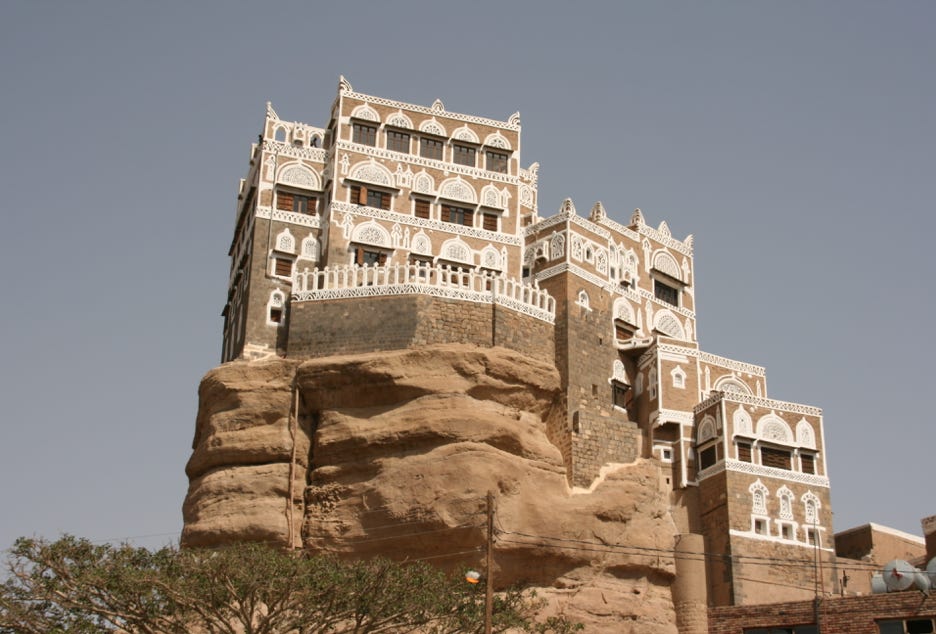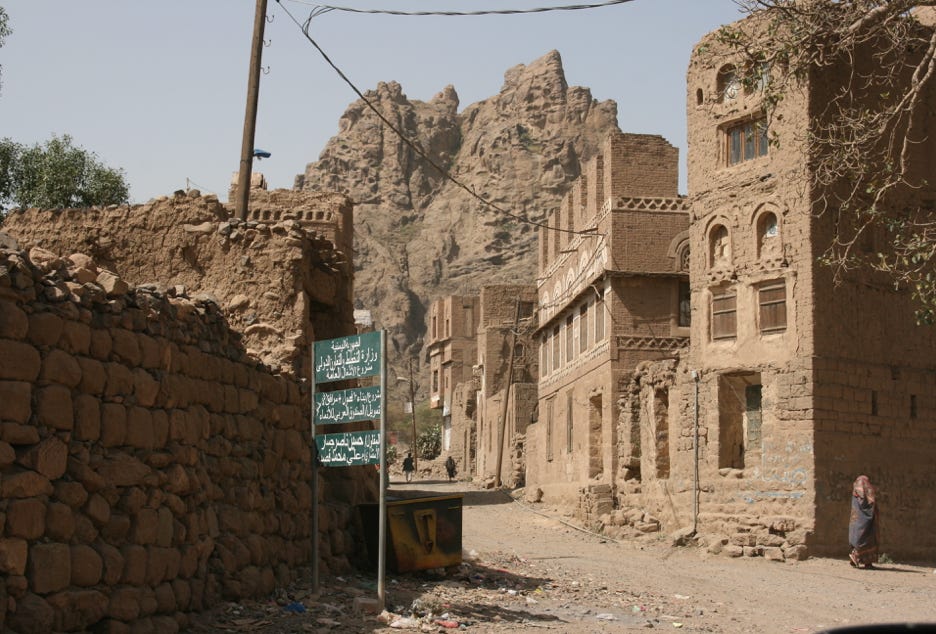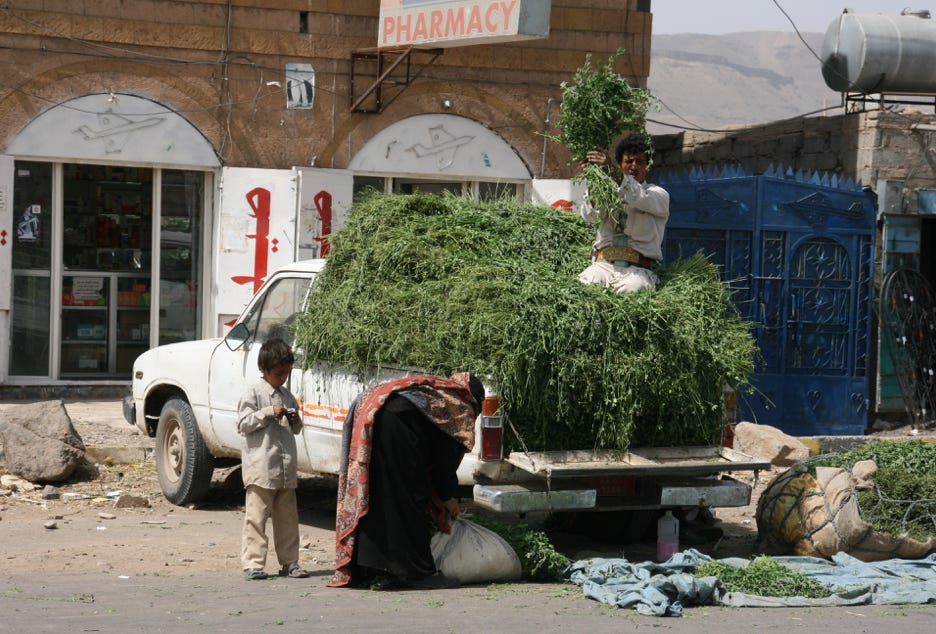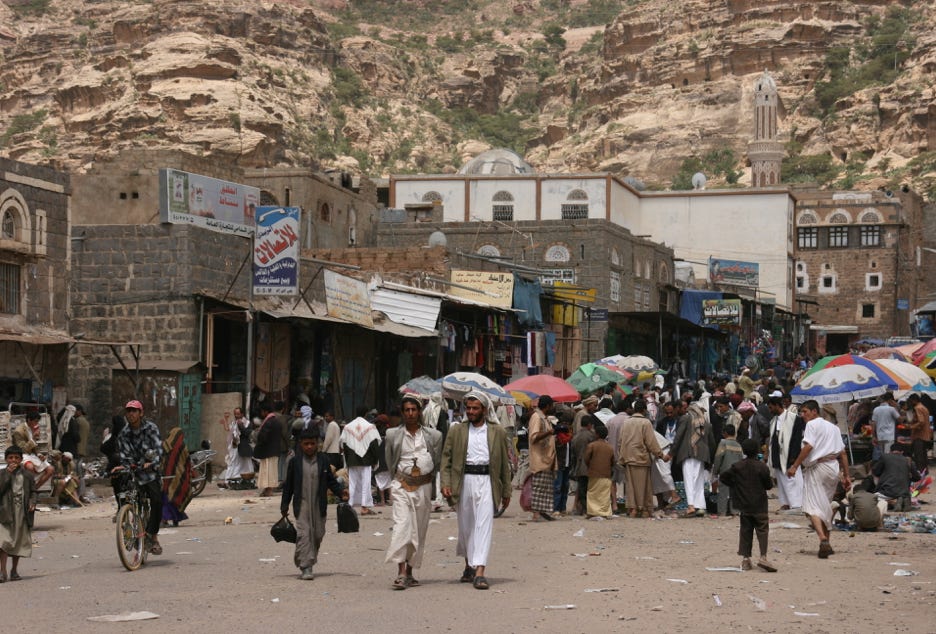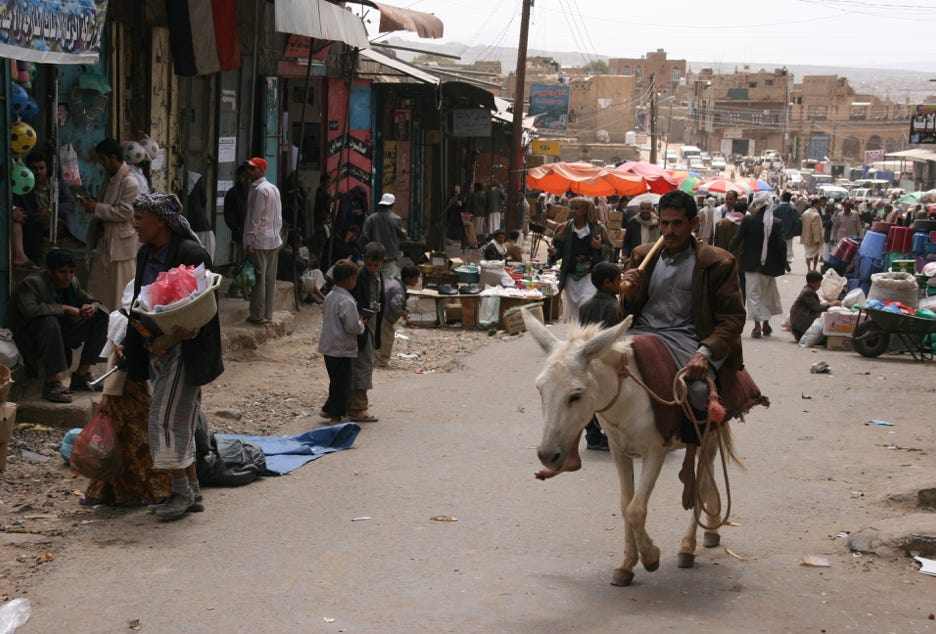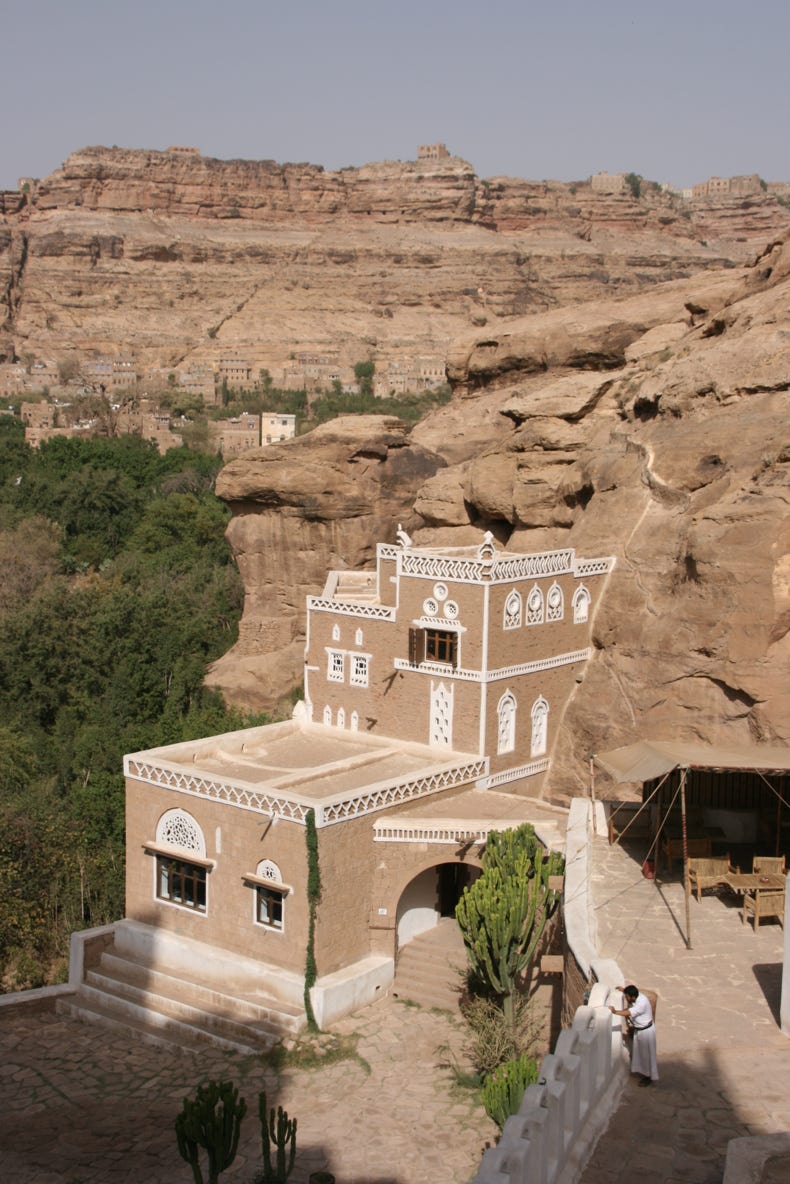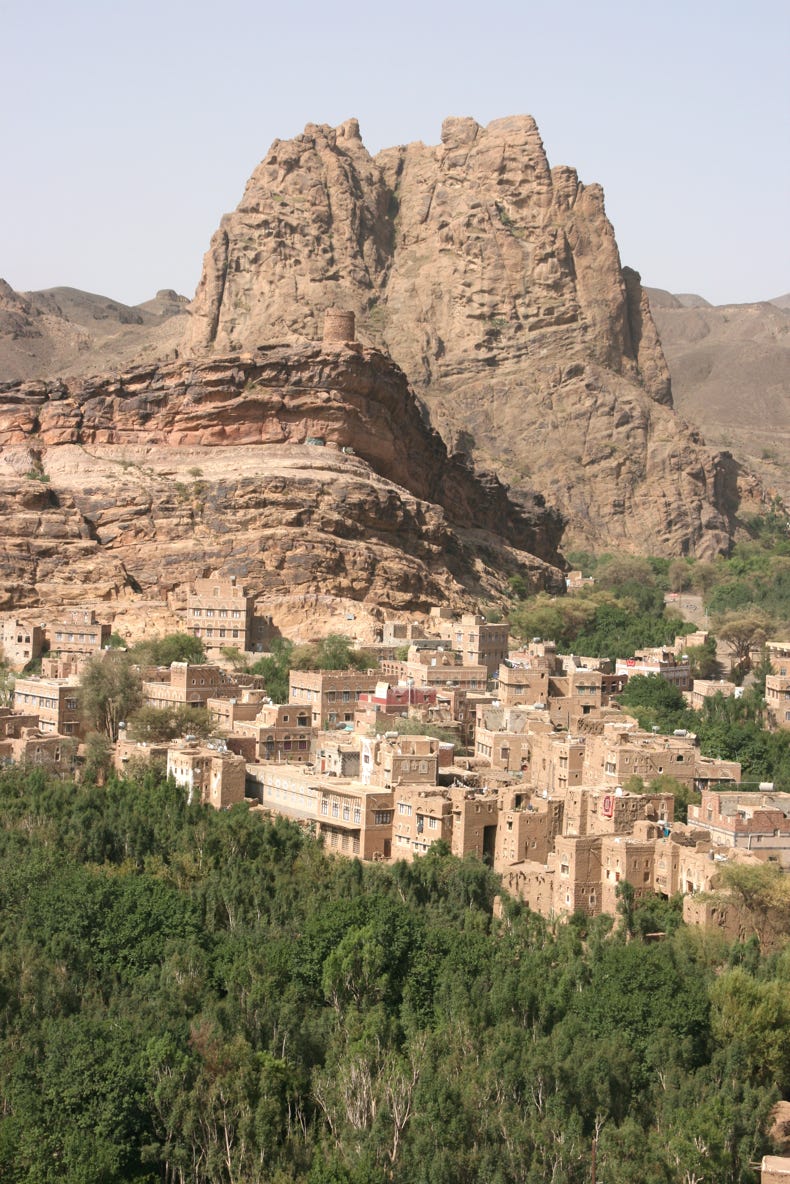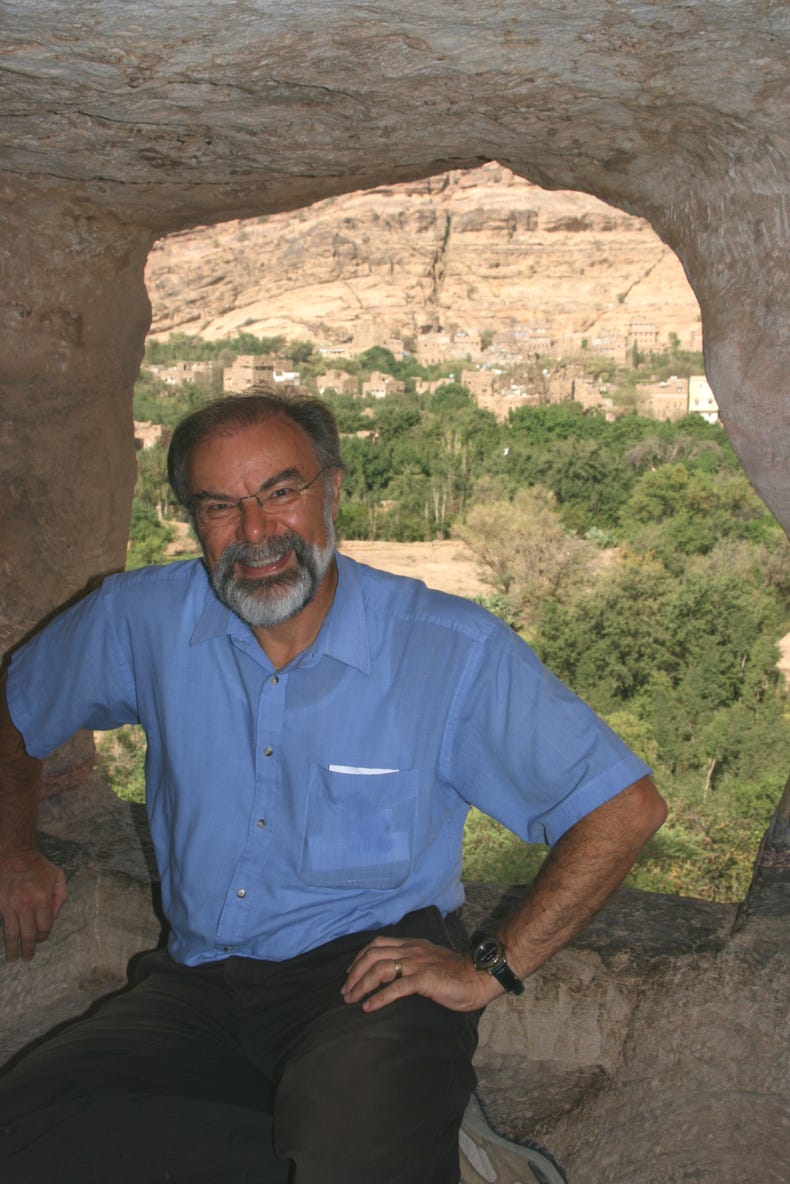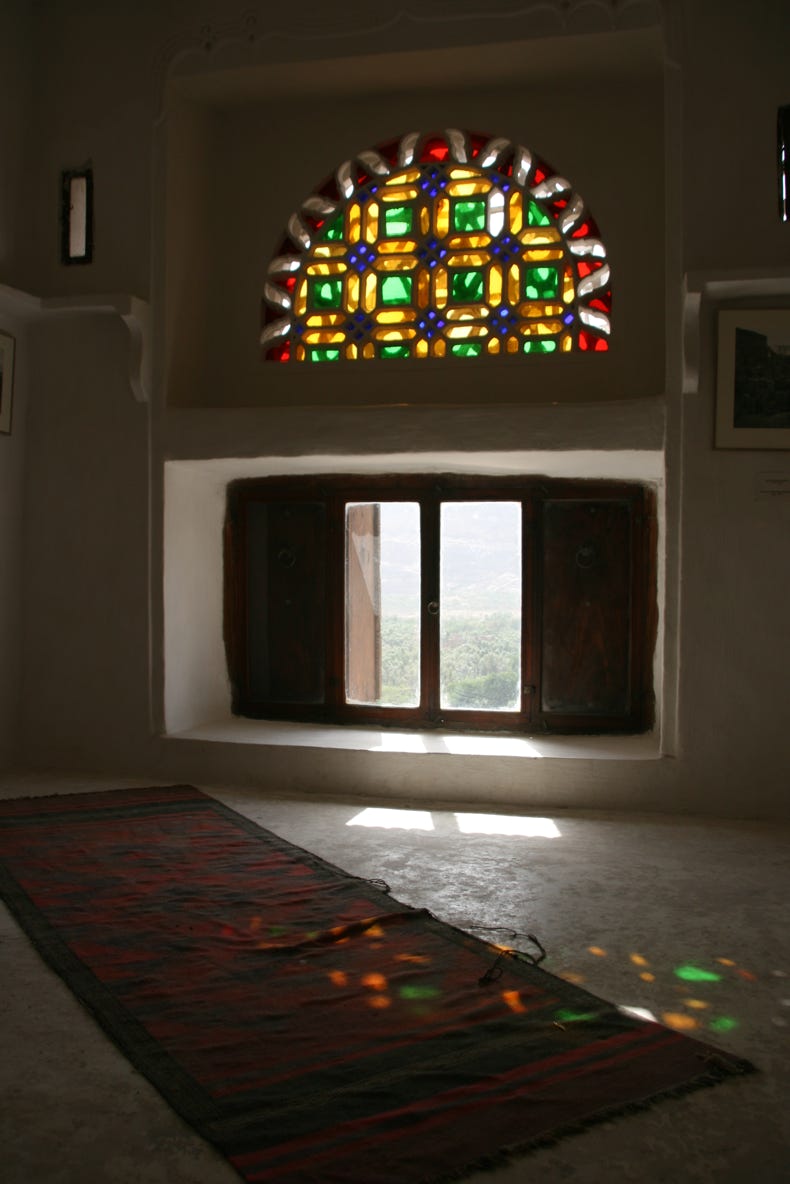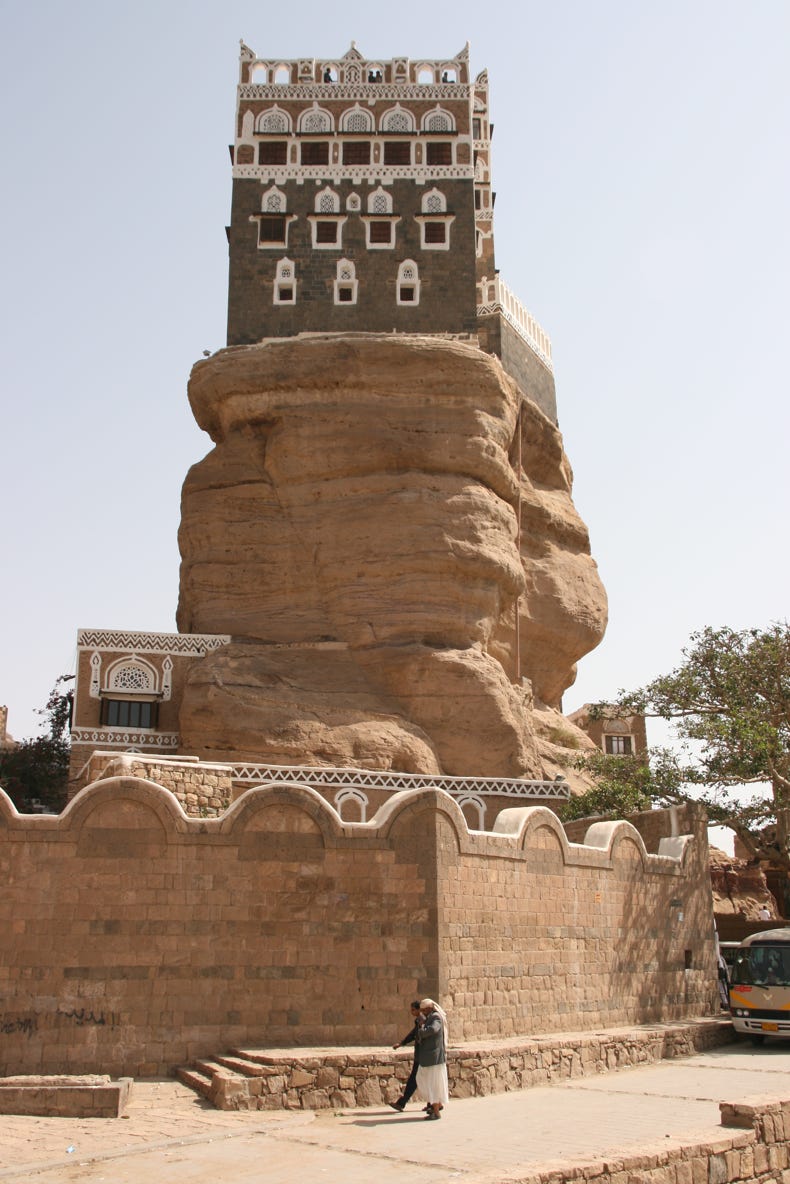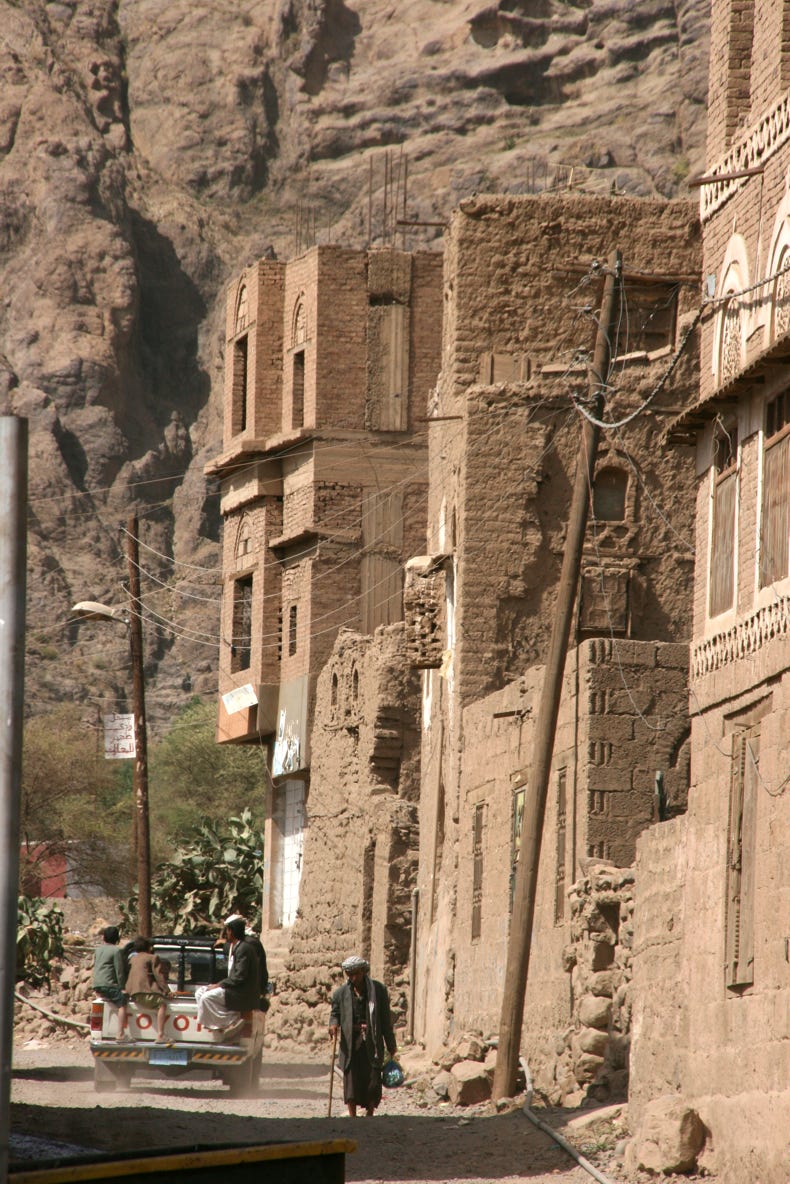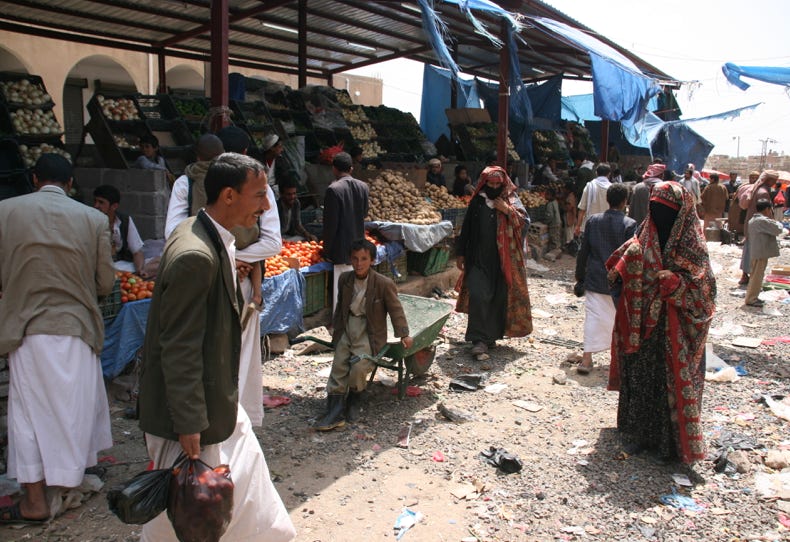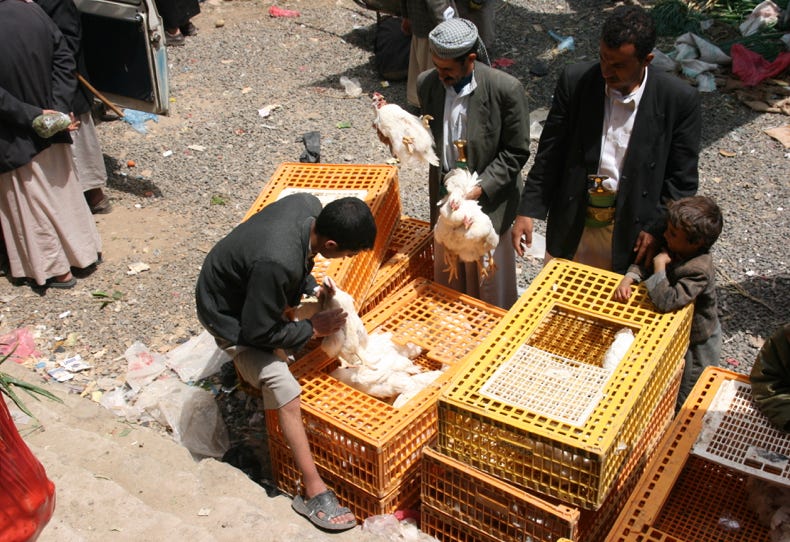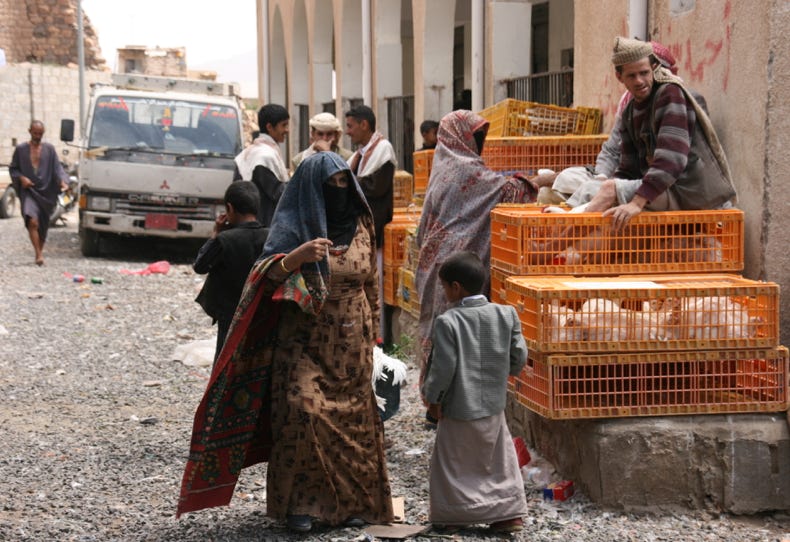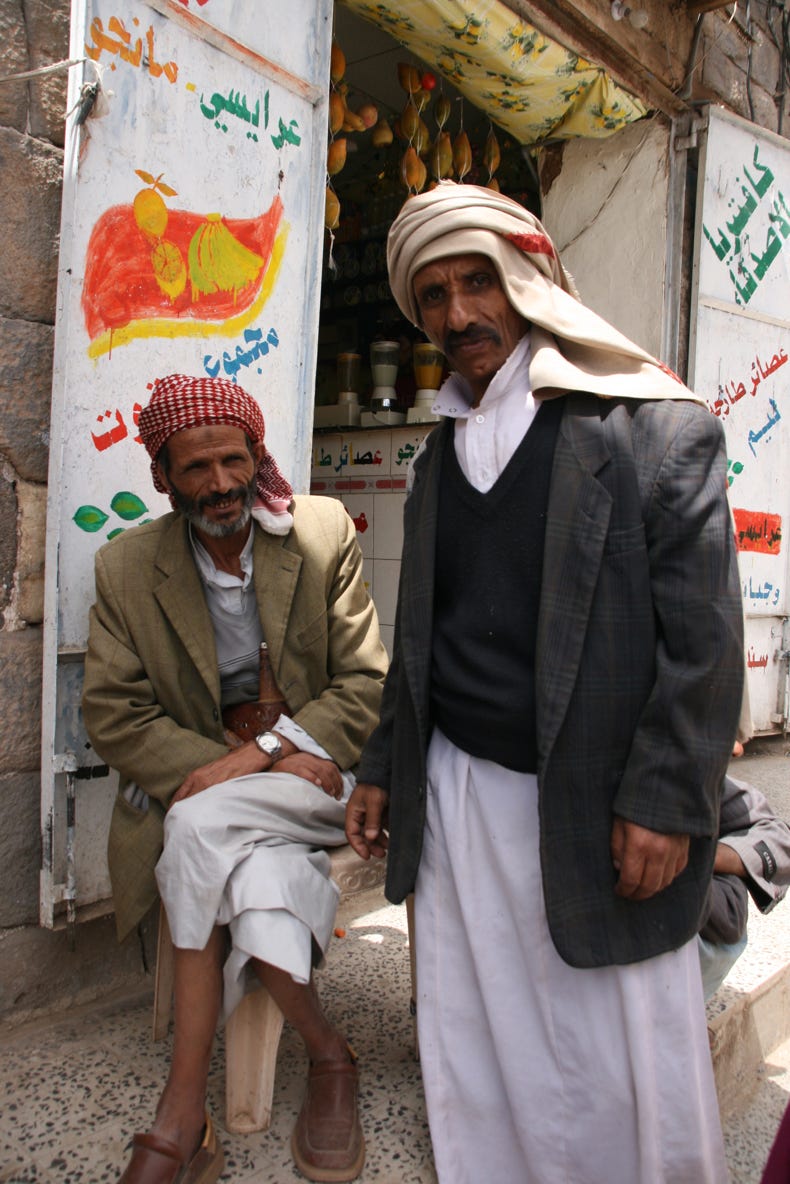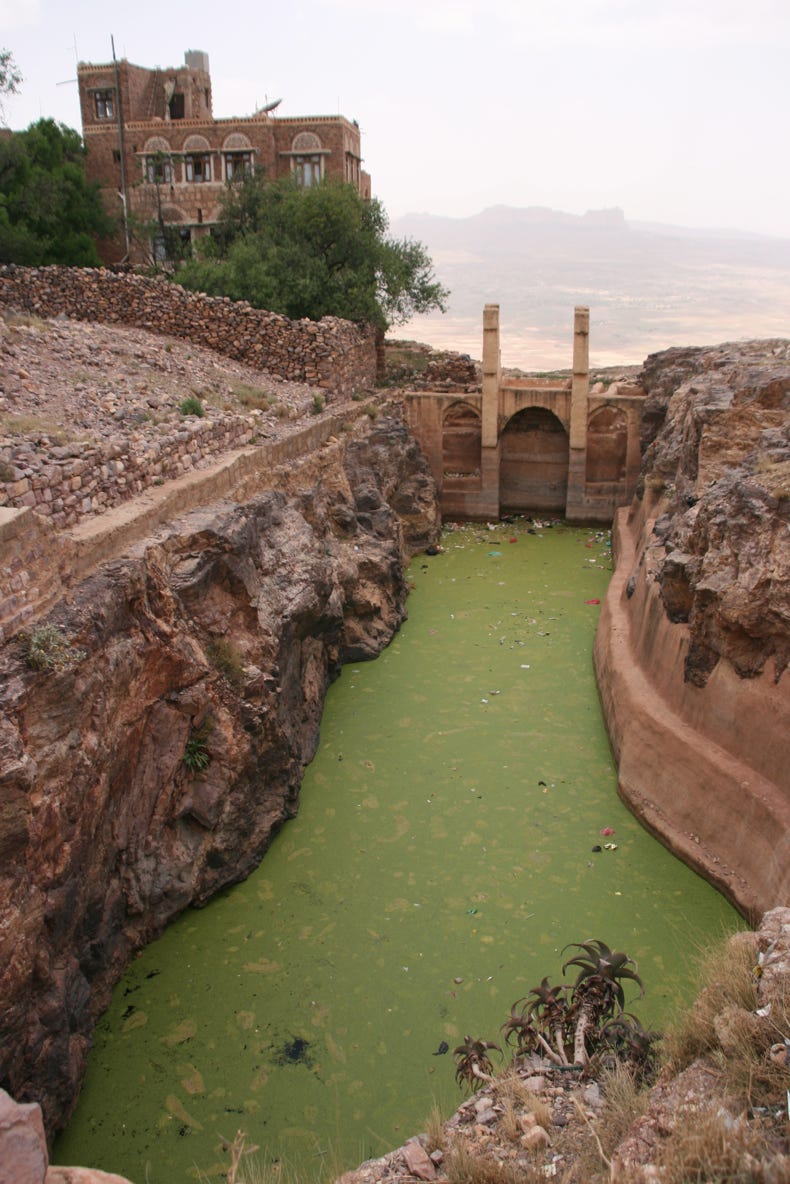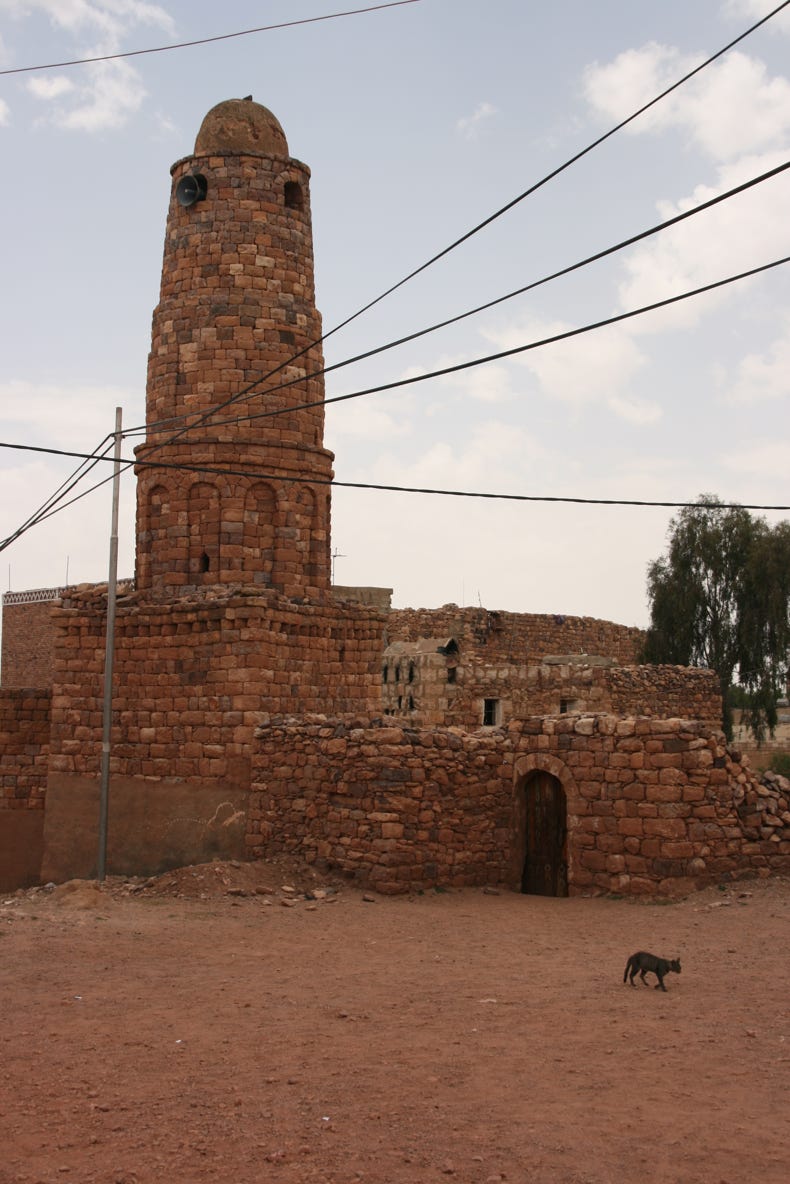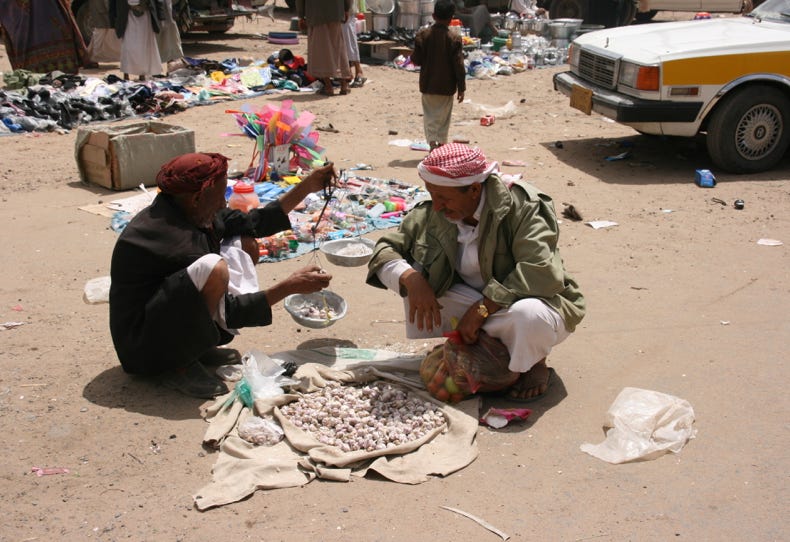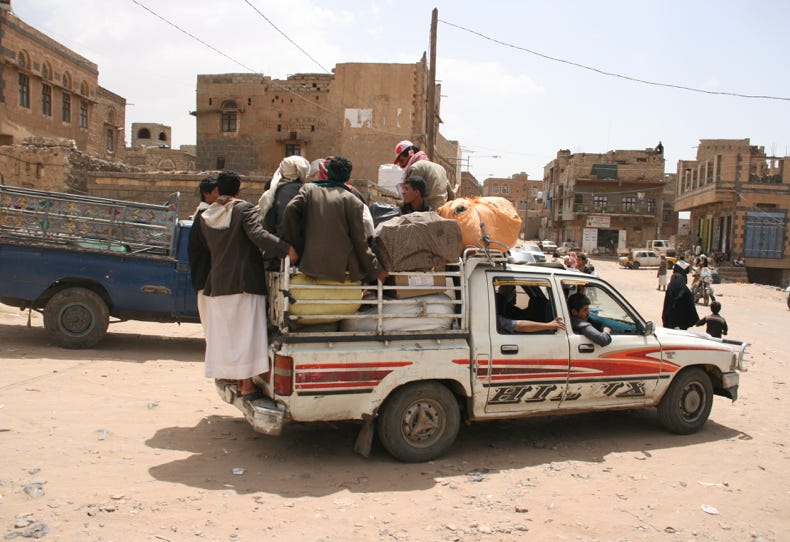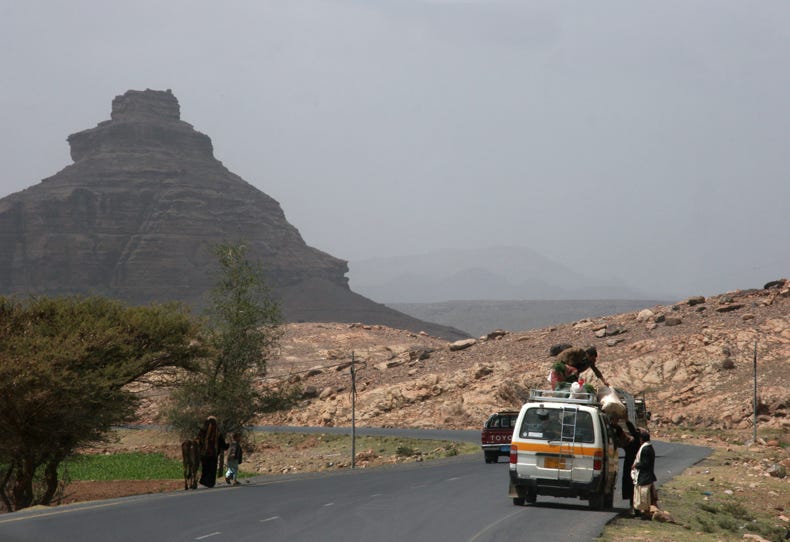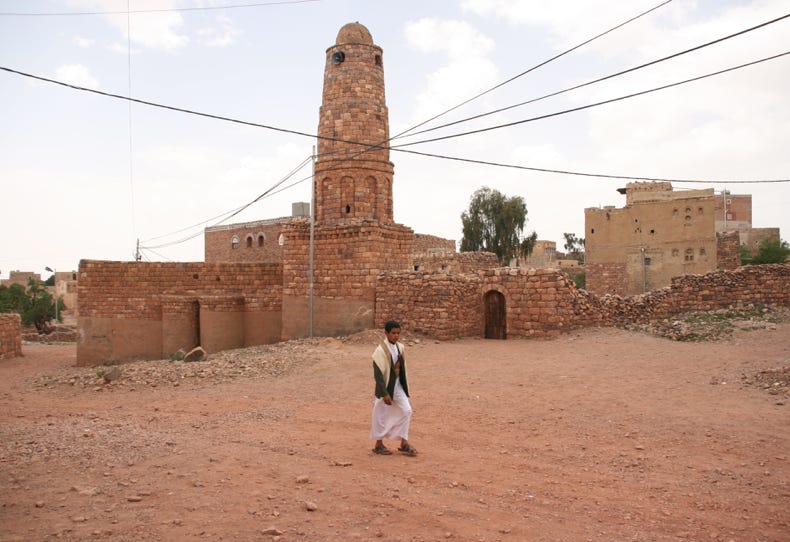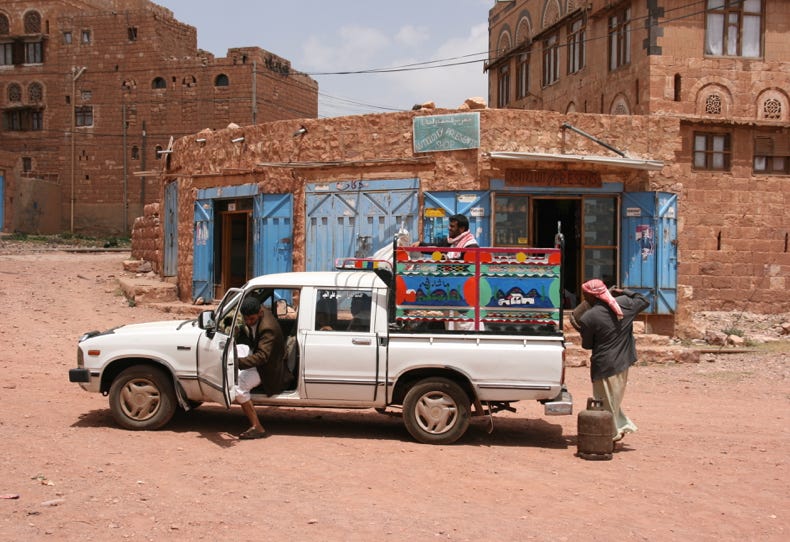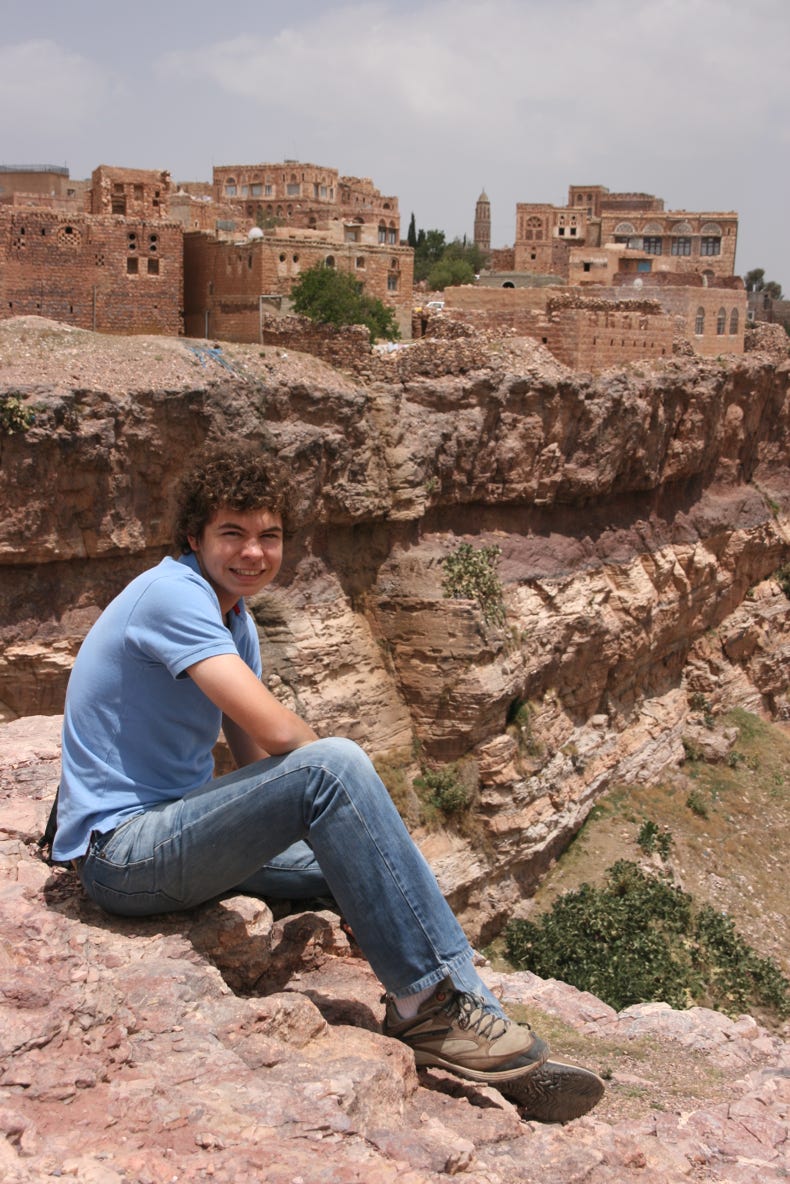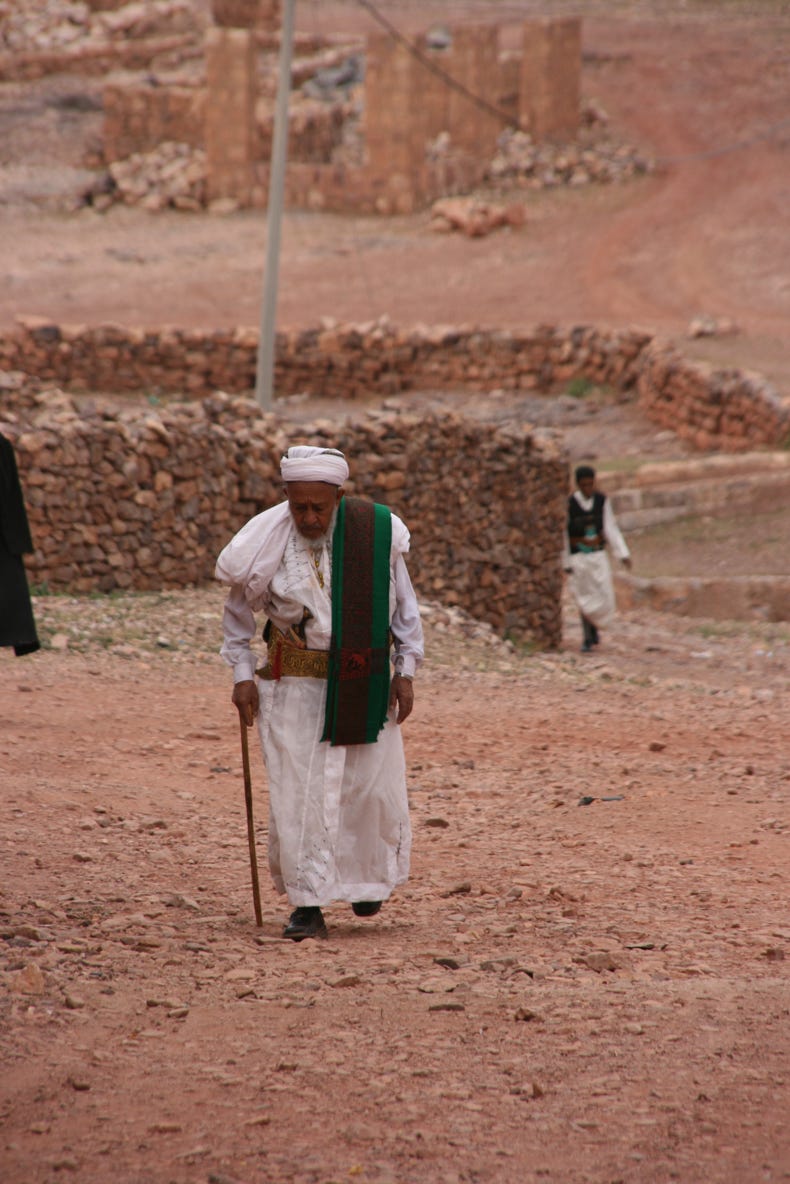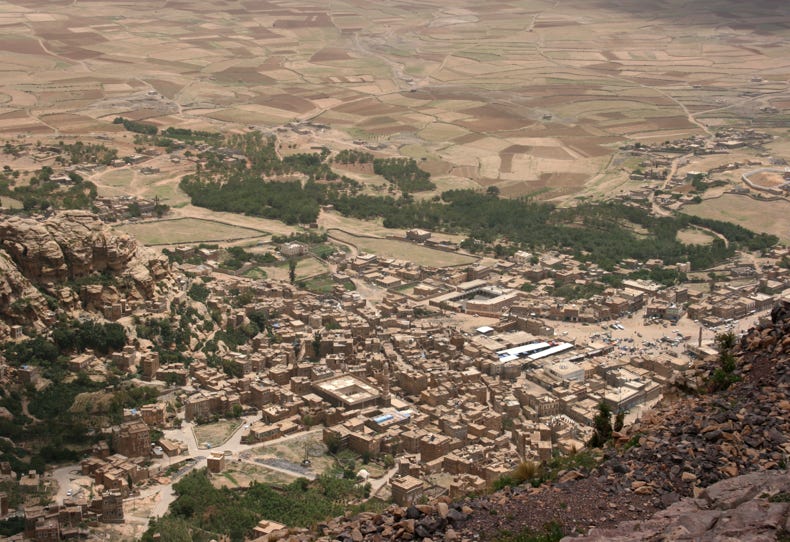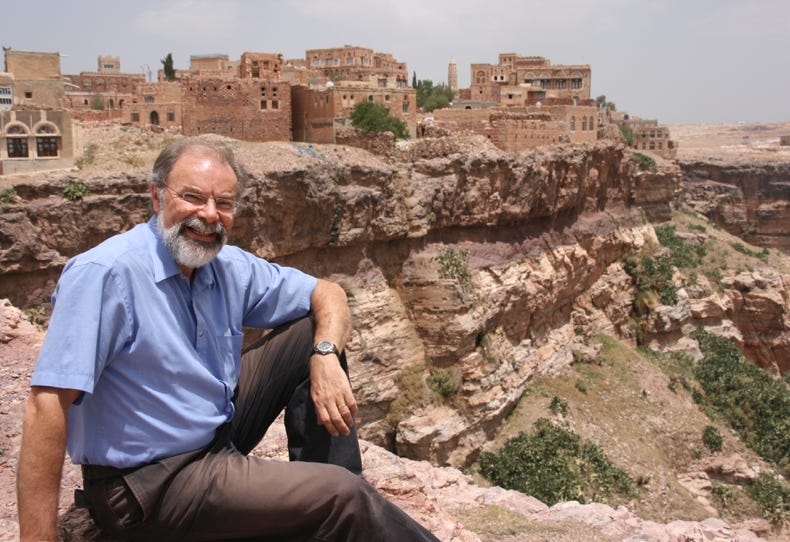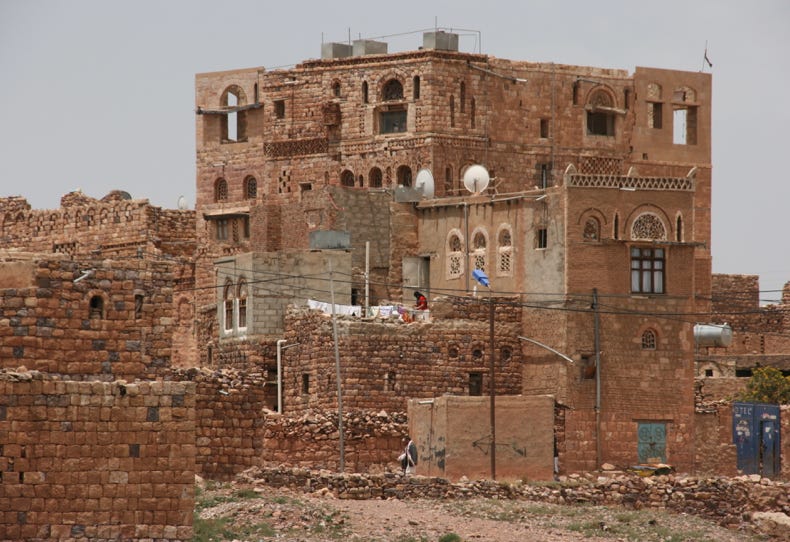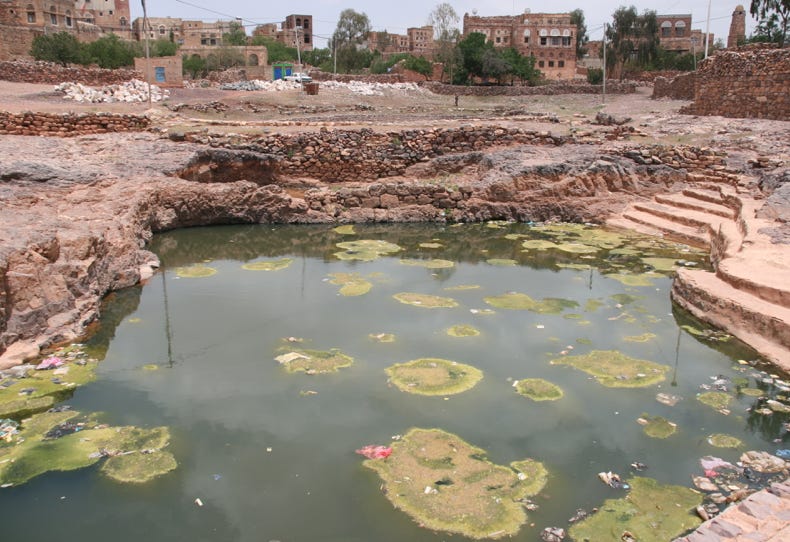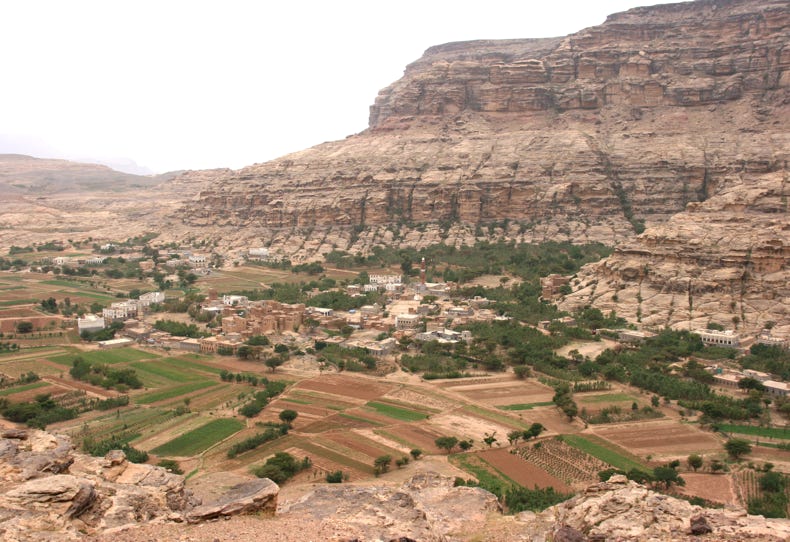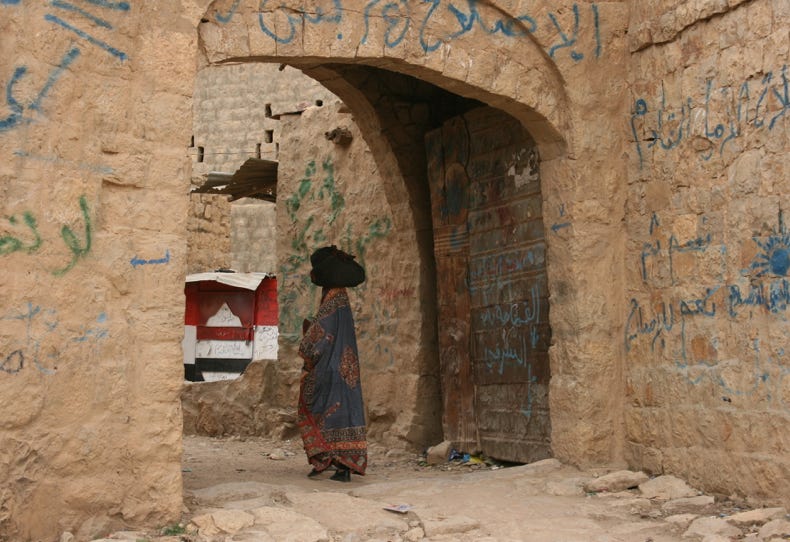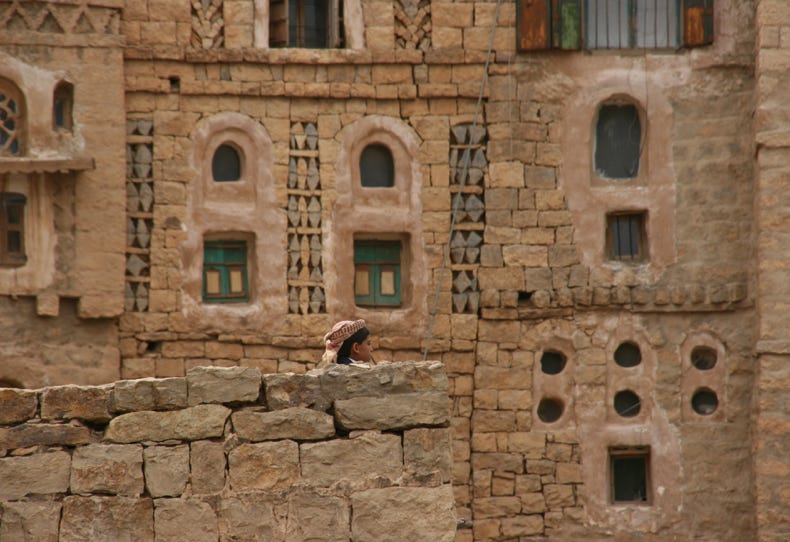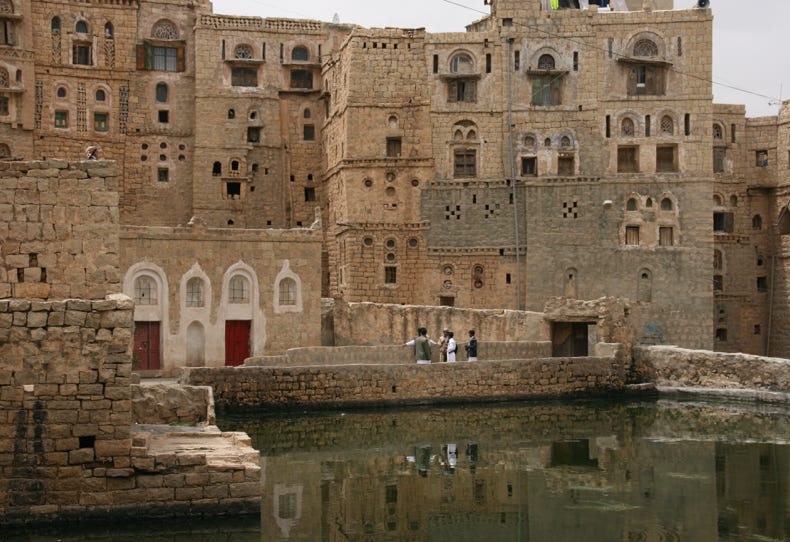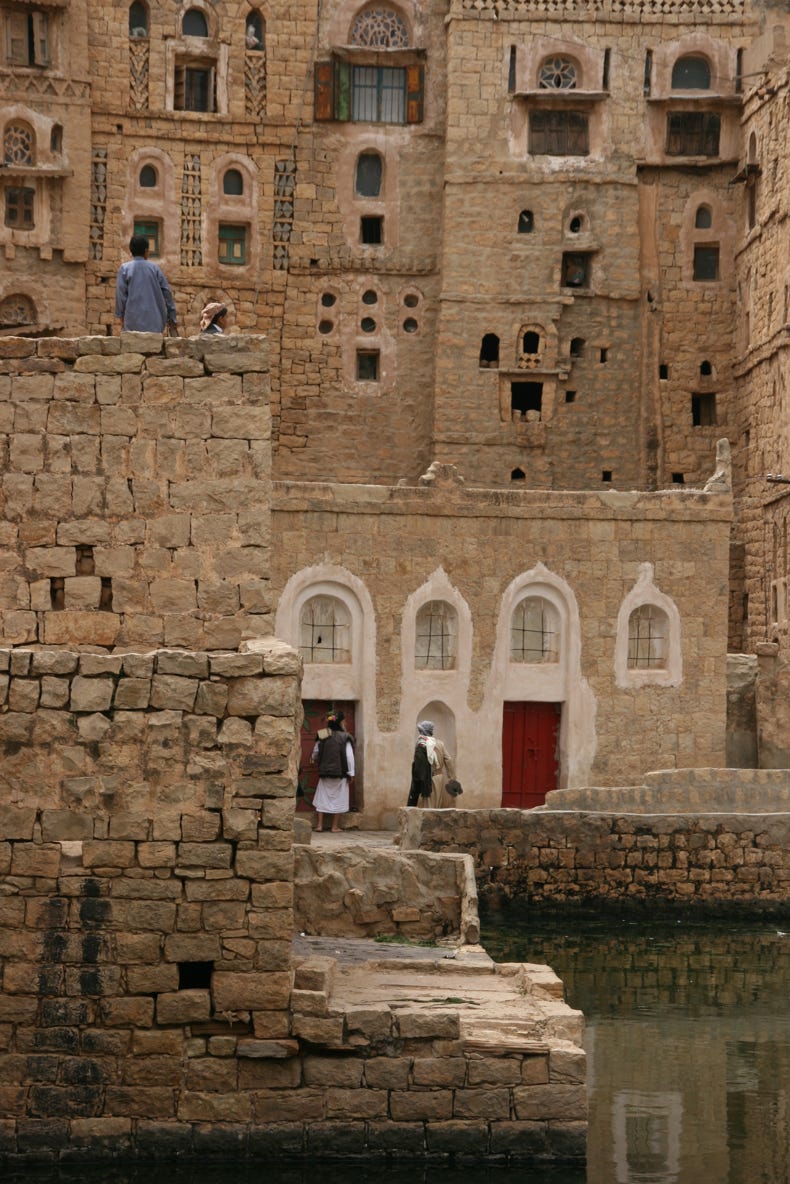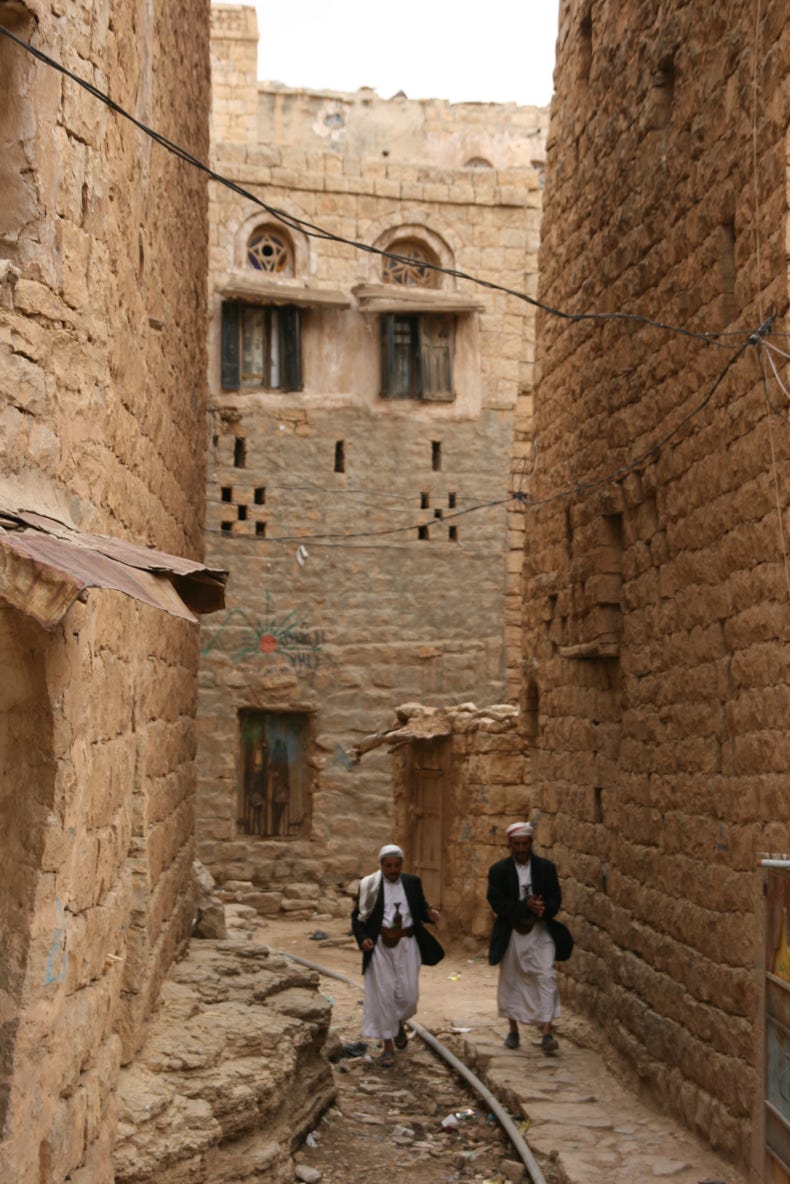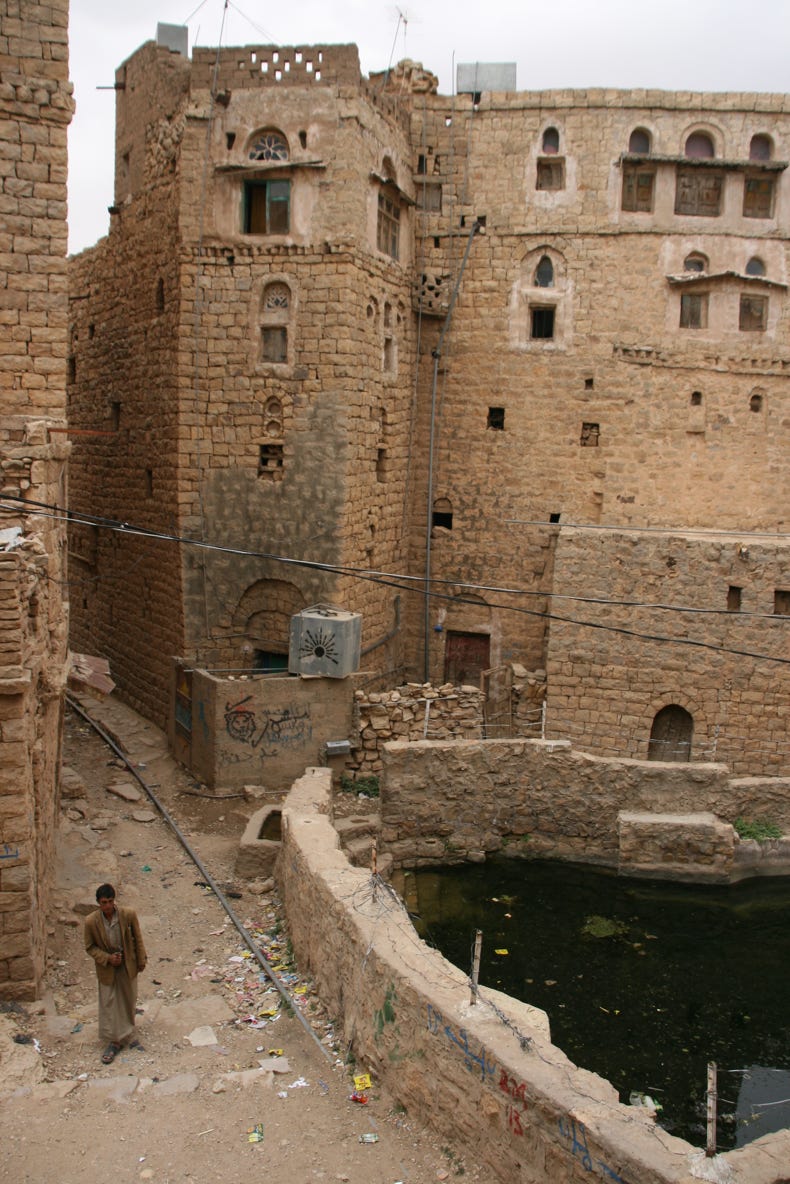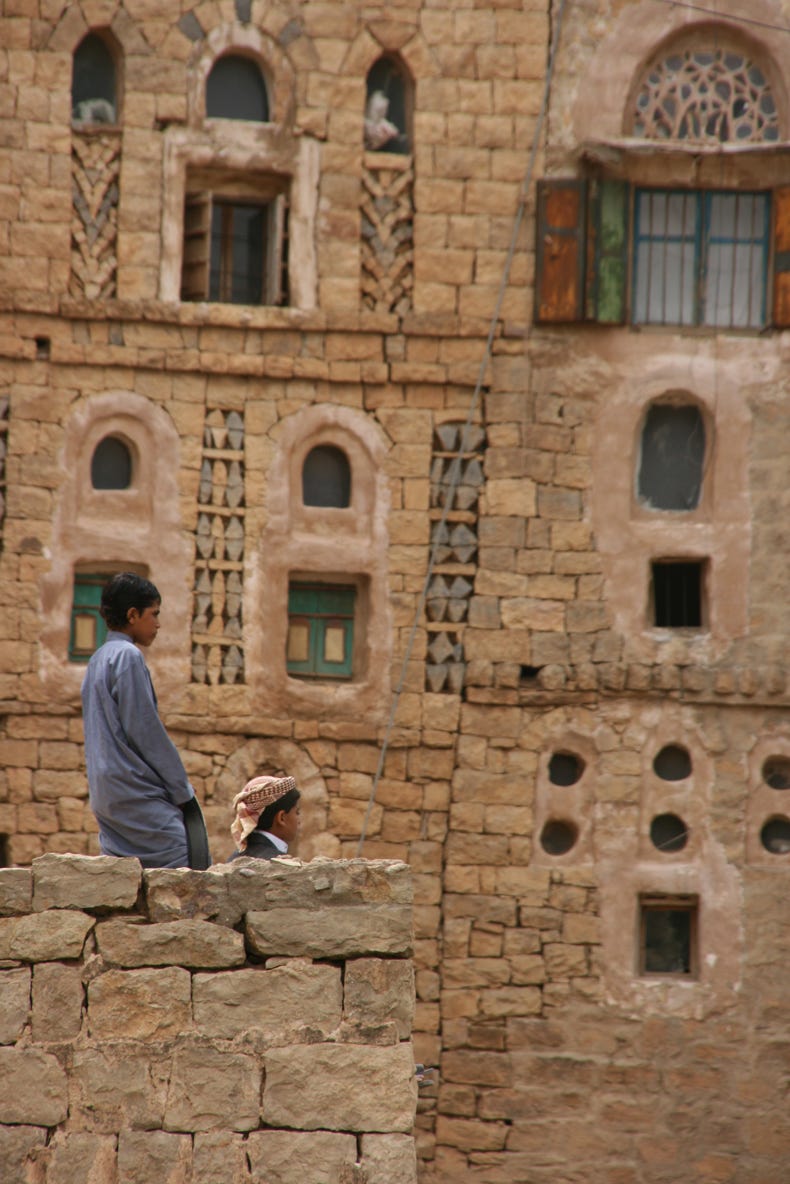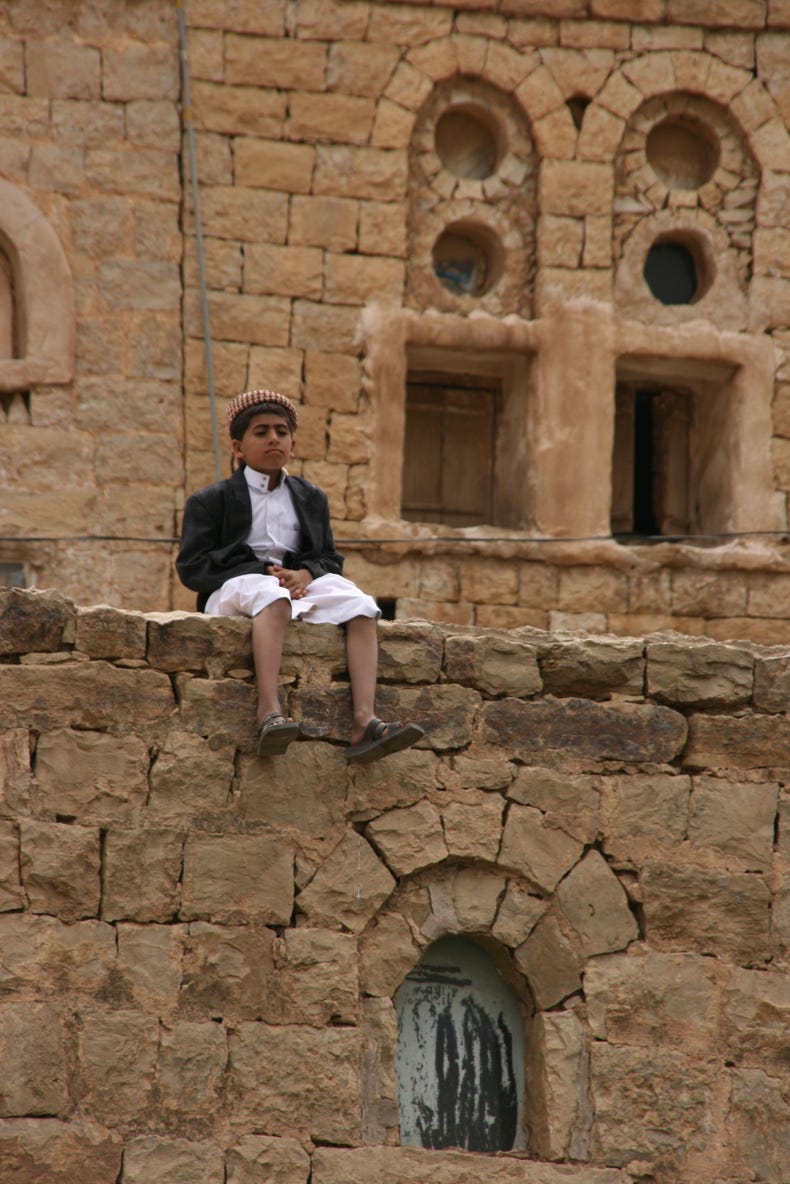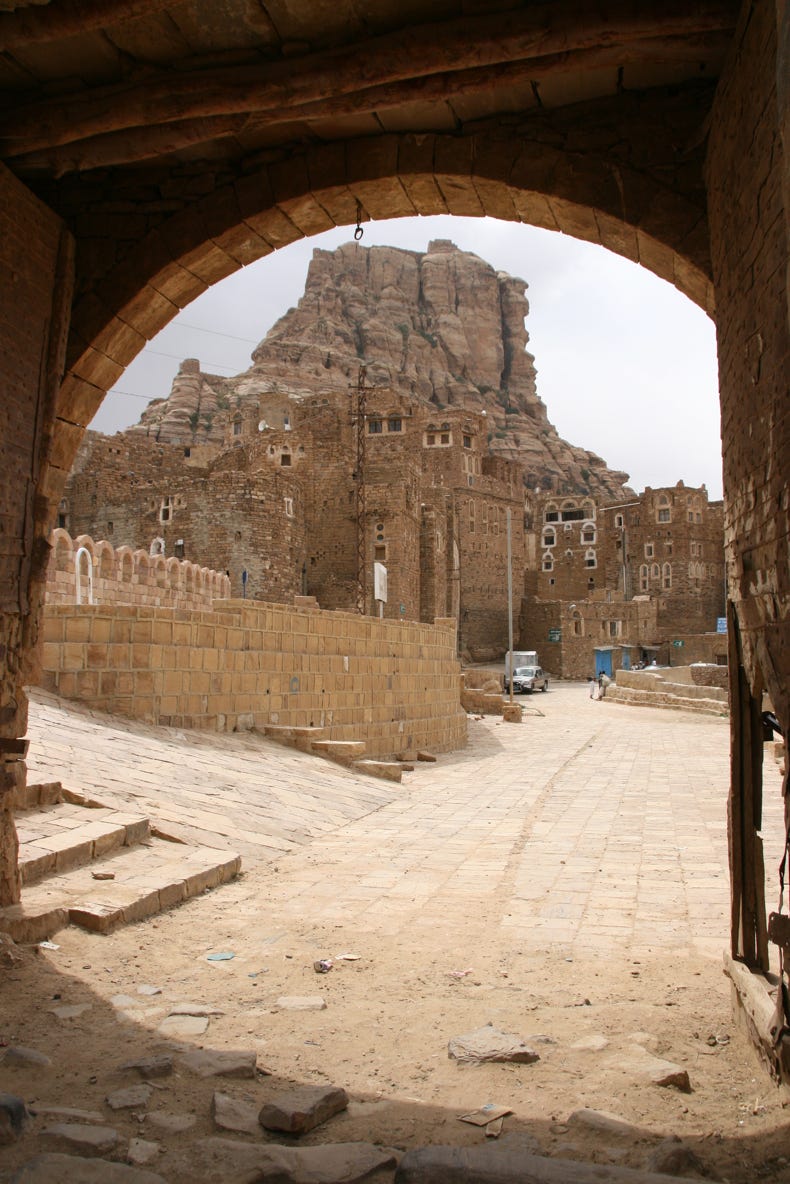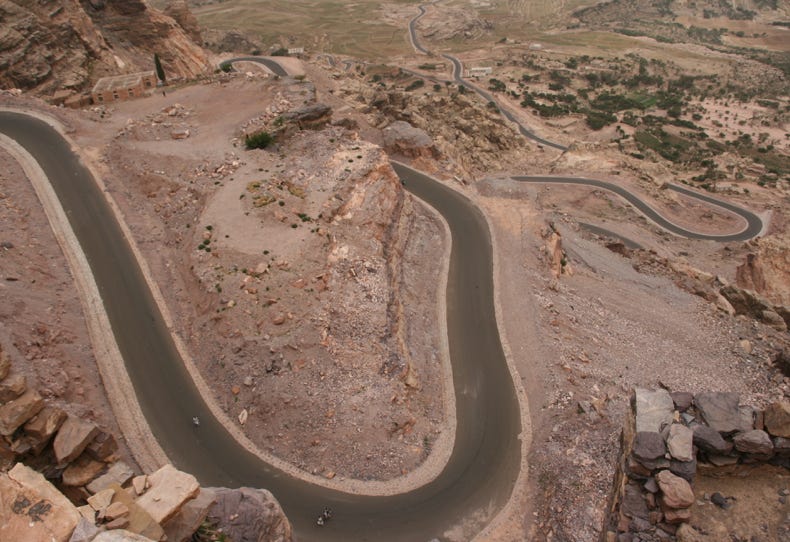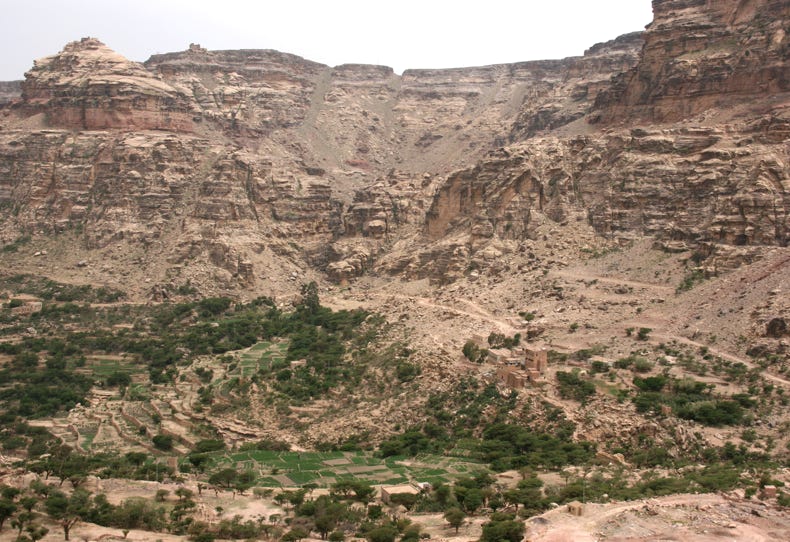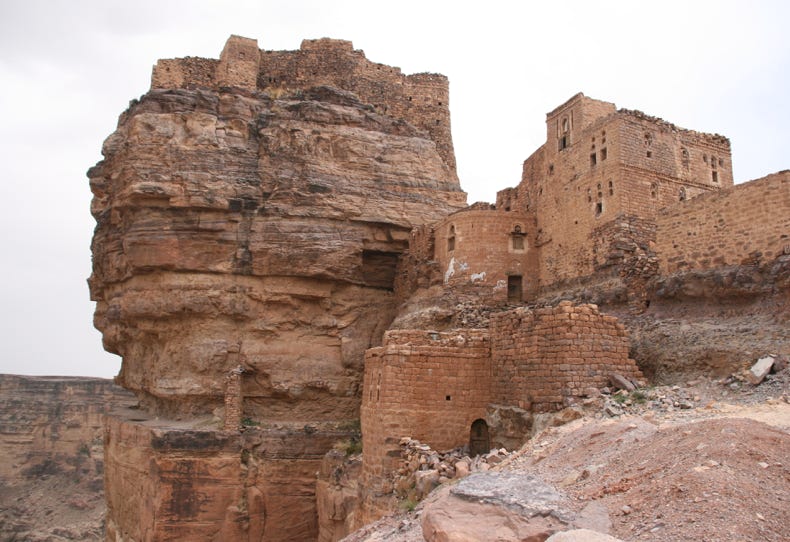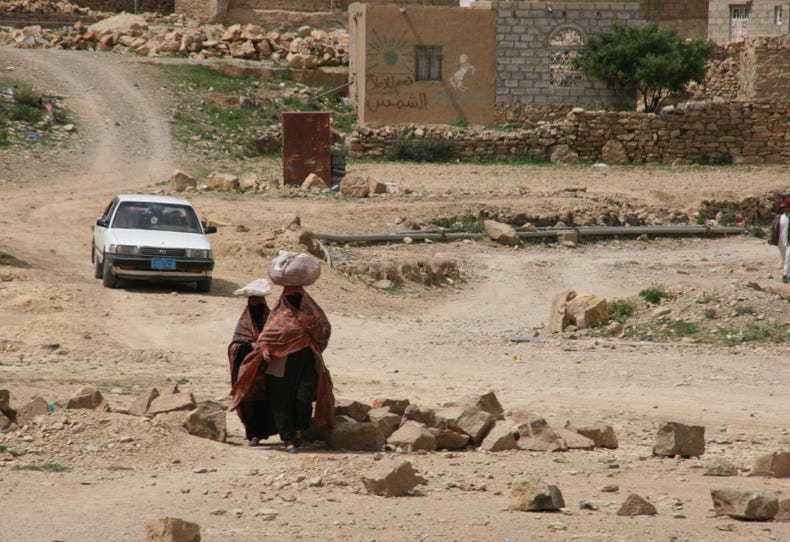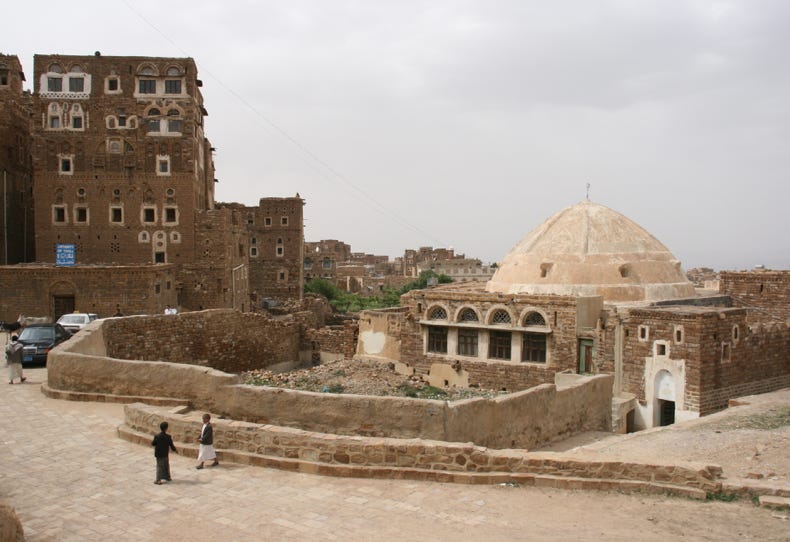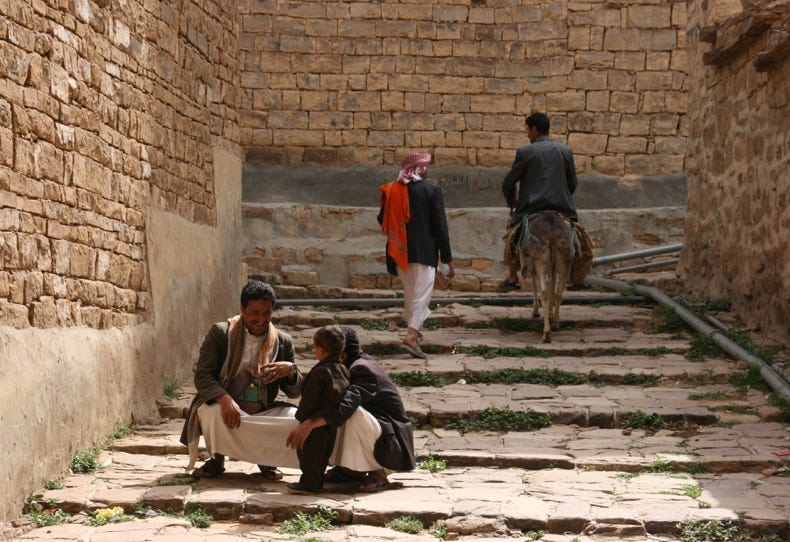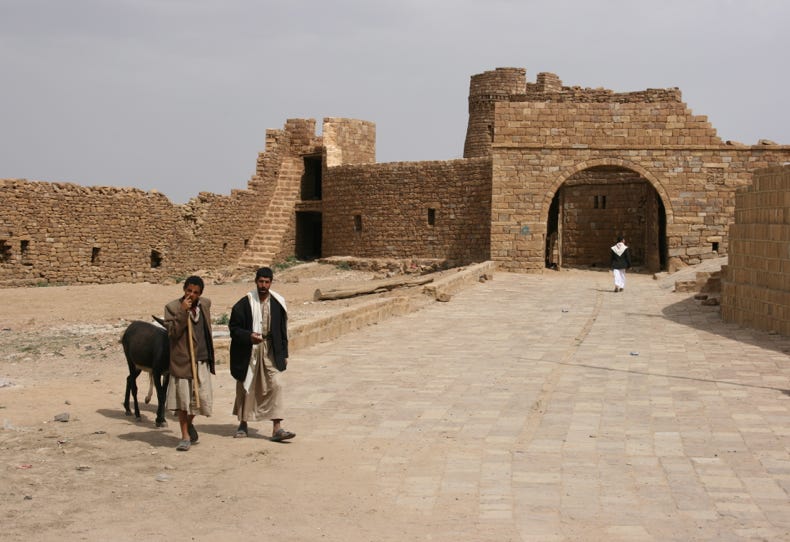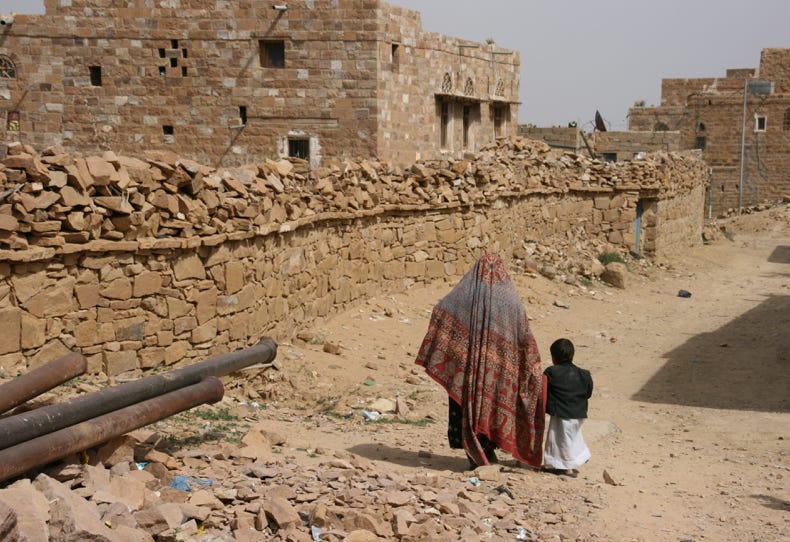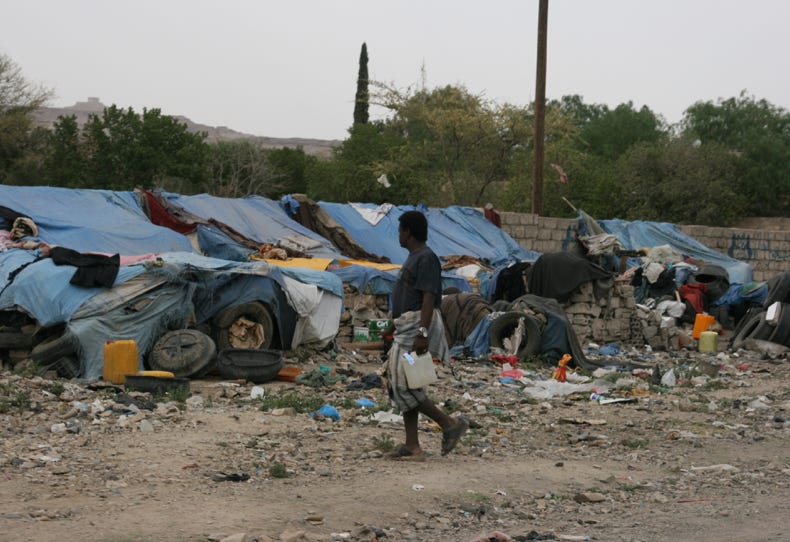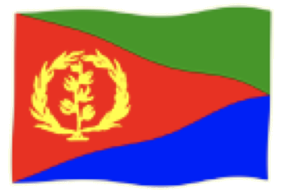

It didn’t help my peace of mind when I picked up a copy of “Yemen Today” before breakfast and started reading an article entitled “Danger – Terror attacks are on the rise... More to follow we are told... Is Yemen still a safe place?”. The article described how Sunni rebels from Yemen’s north had brought their fight against foreigners right into Sana’a, and had shifted their focus from the vague category of ‘Western interests’ such as hotels and businesses to foreign tourists as part of their declared aim to rid Yemen of all infidels. Rather than the occasional car hijacking and beheading, they were now using explosives, machine guns and heavy weaponry. The article described how al-Qaeda was actively recruiting young men in the mountain villages – just the types of places we were due to visit today.
Despite the contents of the report, we found the Yemenis today just as warm and welcoming as we had on our previous days. There was a genuine interest in finding out where we had come from, and we always received huge smiles and the words “Welcome” or “You are very welcome to Yemen”. I have seldom found the people of any country as warm, hospitable and welcoming as those in Yemen.
Our aim today was to explore six villages within about 60 kilometres in the Haraz Mountains to the north-west of Sana’a prior to returning to Sana’a to catch our evening flight to Asmara in Eritrea. Because the program was quite full, we left the hotel with our armed driver, Abdullah, at a little after 7:30 am. Being Friday, the Muslim holy day, the streets of Sana’a were almost deserted as we drove out of the city, although as we later found out, this was not because everything was closed for the holy day, but because everyone was sleeping in. The markets (including the sales of qat) picked up just like any other day a little later in the morning.
As an aside, I learnt today just how significant qat is in Yemen, even leaving aside the obvious point that almost every male from the age of 11 or 12 upwards seems to spend their afternoons and evenings chewing it. Apparently one of the reasons that food costs have risen so much in Yemen is that fields are being diverted from food production to qat because it is more profitable, in part because it can be harvested (and can thus produce an income) all year round. On average, 10% of all household incomes are spent on this narcotic, its cultivation consumes 20% of Yemen’s water use and its production constitutes 6% of the country’s GDP – even though Yemen is currently importing between 75% and 90% of its food requirements. In the current inflationary situation, households are cutting back on food and other expenses rather than reduce their qat use. In the choice between food and qat, qat is clearly winning, even though it is responsible for a range of other problems, including mouth cancers. Yemen seems like a nation of addicts.
But back to our travels for the day. Our first stop was Wadi Dhar, just a short drive beyond the outskirts of Sana’a. Wadi Dhar is situated in a watered valley, surrounded by steeply sided, flat-topped hills. The star attraction in Wadi Dhar is the Imam’s Palace, constructed in the 1920s for the Imam Yahya. It is spectacularly located on a tall rocky outcrop of rock, rising skywards like a toadstool on steroids.
The palace was open for inspection, so we spent an hour exploring its rooms, corridors, secret passages, deep wells and beautiful stained glass windows that cast kaleidoscopic illuminated patterns on the floors of the building. The drums, music and dancing outside added to the festive atmosphere, as did the friendly police who were delighted to have their photos taken, holding their very shiny black sub machine guns, including one photo with Andrew.
Our second stop was in the village of Shibam. Shibam is situated at an altitude of 2300 metres, and is backed by a steep escarpment called Jebel Kawkaban that rises 500 metres (to 2800 metres). Being Friday, the weekly market was in full swing, and it was great fun to walk along the main street and engage in ‘people watching’ before heading off to the side where the vegetables and animals (mainly live poultry) were being sold.
Our third stop followed a drive up the spectacularly steep and winding road that ascended Jebel Kawkaban, up to the village located on the flat top of the hill - the village’s name was Kawkaban. Kawkaban’s hilltop location was originally chosen for defensive purposes, and it was only with the advent of air power that the village was finally conquered during the civil war of the 1960s. Kawkaban was a very quiet and relaxed village, offering spectacular views from the edge of the escarpment over the village of Shibam and beyond. Andrew and I spent three-quarters of an hour walking around the streets and houses of the village before having a simple but very tasty traditional Yemeni lunch in a tiny eating house near the centre of the village.
After lunch, we descended the same steep road that we had climbed a couple of hours previously, passed by Shibam again, and headed to our fourth stop, the tiny village of Hababah. Hababah was situated on a small hill, but had a distinctive large open water cistern that was used to provide household water and water for animals to drink. It was beautiful to look across the waters and see the old traditional tower houses reflected in its waters, as children looked down from a tall nearby building, men came to worship in the nearby mosque, and herds of goats scuffled by, stirring up fine dust from the track.
Our fifth stop involved another climb up the escarpment to what must be one of the most sensational locations for any village anywhere in the world. Zakati (which is pronounced more like ‘Zagati’) was a tiny village perched on a rock outcrop that leaned out over the edge of the steep escarpment. Zakati would be a VERY bad place for anyone suffering from vertigo, as the paths and steps (more steps and pathways) zig-zag on the very edges of the cliffs, with no railings or protection of course. Andy and I entered Zakati with a young local man through the village’s only gate (that had a thick wooden door for protection), and climbed up to the roof of the tallest building in the village – right on the edge of the escarpment. Needless to say, the views were astonishing.
Our sixth and final village was Thula, a slightly larger village that was set against the backdrop of a tall pillar of rock, on the top of which was a fortress. Although the village was once an important centre of theological studies, it attracts visitors today for its fabulous situation and its beautiful old buildings. A stone wall still surrounds the village, which contains some 25 mosques.
The six villages we had seen were stunning, unlike anything anywhere else in the world I suspect. As I couldn’t stop myself saying to Andrew as we drove away from Thula, “Why would anyone want to spend their holiday lying on a beach when they could be experiencing scenery like this?”.
We left Thula at about 3:15 pm and headed back to Sana’a and straight to the airport. We thus arrived in plenty of time to catch our Yemenia Airlines Airbus A310 flight to Asmara. Unfortunately, neither the airport staff nor the airline were quite as efficient as we had been, and the experience of passing through Sana’a Airport was less than positive. The airport does not display any signs to direct passengers to the correct gate, nor does it make any announcements apart from a staff member standing at an exit door, shouting without the help of any microphone, trying to make himself heard over the abuse of the passengers waiting nearby. Unless you are near the correct exit door, you could very easily miss your flight.
We had passengers for three flights in our waiting hall, one flight to Aden, one to Riyadh, and ours to Asmara. There were only enough seats for about 15% of the passengers present in the waiting hall, and it was a constant, crushing jostle as passengers for a flight that had been called had to squeeze their way through to the doors, past other passengers who had nowhere to move to in order to make way for them, all without air conditioning in temperatures in the high-thirties. Our flight was one hour late, which meant that Andrew and I were standing in these conditions for about two and a half hours.
Finally, a rumour (which was correct as it turned out) began circulating that the Asmara flight was leaving from a different doorway in a different waiting hall of the airport. We were caught up in the rush to the other door. The final exquisite touch came when a little girl started vomiting all over the feet of the passengers who were near her, which included the people standing right next to me.
The flight itself was extremely crowded and, dare I say, smelly, as the plane was extremely old and worn out. Dinner consisted of a small, swollen box of fruit juice plus three slices of dry bread. Andrew couldn’t face it and went without eating. Upon landing in in Asmara at about 9:00 pm (rather than our scheduled 7:50 pm), we passed through immigration, a process that involved no less than six people to process each passport. After that, a currency declaration form (in triplicate) needed to be filled in, on which the precise value of all currencies being carried had to be entered. We then waited for our luggage, which finally emerged at 10:20 pm, after which the customs process began. In Eritrea, they manually inspect – thoroughly – the contents of every bag and suitcase brought into the country, which is quite a large number from a full A310 aircraft when the luggage allowance in economy class is 50kg per person. Moreover, every electronic device had to be declared (in triplicate, without carbon paper), including make, model, serial number, country of manufacture, etc. To cut an agonisingly long story short, Andrew and I finally emerged from the airport, quite tired, at 11:45 pm.
We took a taxi to our hotel, the Ambasoira (also variously spelt Embasoira and Ambassoira in various places in and around the hotel). Check-in at the hotel also took quite a while because of the multiple forms that needed to be filled in, passport checks, etc, but it was good to get into bed, finally, at a little after midnight.
It had been a long day, but we were back in Africa.
